








in the foothills of the Ozark Mountains in Missouri, High Adventure Ranch offers all of the excitement of western big game hunting without the costs and hassles.



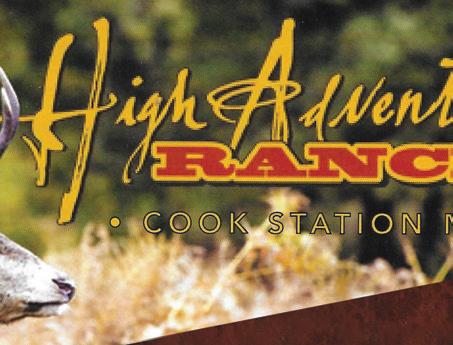

Be prepared for a fair chase hunt! With over 3 square miles of prime natural habitat, our ranch provides challenges to even the most seasoned hunter, but our experienced guides and “No Game, No Pay” policy practically ensure that you won’t go home empty handed. In addition, High Adventure’s hunting season is year-round, allowing ample time to fit the most demanding schedule.
While our whitetail, elk, wild boar and red stag hunts top our hunter’s most popular lists, hunters from around the world have visited our ranch, hunting everything from American bison, black buck, fallow deer to Spanish goats and African game.
So, whether you desire a 10-point whitetail mount for



trophy room or simply the thrill and challenge of
down
of our many elusive big game animals,

of






un-


James
GENERAL
EXECUTIVE
CONTRIBUTORS
Scott Haugen,
SALES
ACCOUNT

Hanna Gagley,
Haugen,
Honig,
DIGITAL
Griffin, Riland Risden,
Slisko-Cooper
CORRESPONDENCE
Kellogg likes to get into remote
these
hunt for blacktails,


provide some of the best

tag with a deer like his
KELLOGG)
MEDIA

Two of the North Coast’s most iconic waterways, the Klamath and Eel Rivers, have seen their once plentiful anadromous fish struggle due to a variety of obstacles over the years. So for the watersheds’ salmon and steelhead, there may be no more critical of a game-changer than the dam removal proposals on both rivers. We caught up with California Trout dam removal advocates working hard to help make these projects realities.
One of Northern California’s gems for trout anglers is Eagle Lake, located 16 miles from Susanville. Stealthy anglers like our correspondent Cal Kellogg brave the sometimes chilly October, November and even December temps to tempt trophy rainbows that are prowling close to the shorelines of this gorgeous lake set 5,100 feet up in Lassen County. Cal provides some of his favorite Eagle tips.
The Southland’s bass lakes will likely stay warm throughout the month, giving largemouth chasers plenty of opportunities to cast for big fish on the prowl. “Bass are schooling up into wolf packs, roaming the shallows and eating everything in their path,” says our largie expert Bill Schaefer, who offers up tactics to enjoy summer-like fall conditions and land a few bass along the way.



Haugen gets ready for October blacktail season by trying to get into the mind of a buck that’s ready for the rut and looking for does. In our From Field to Fire column, Haugen details how his hunting tactics change through the month as deer go from the prerut into the rut as Halloween draws nigh. Meanwhile, Chef Tiffany Haugen serves up a delicious waterfowl-flavored burger!
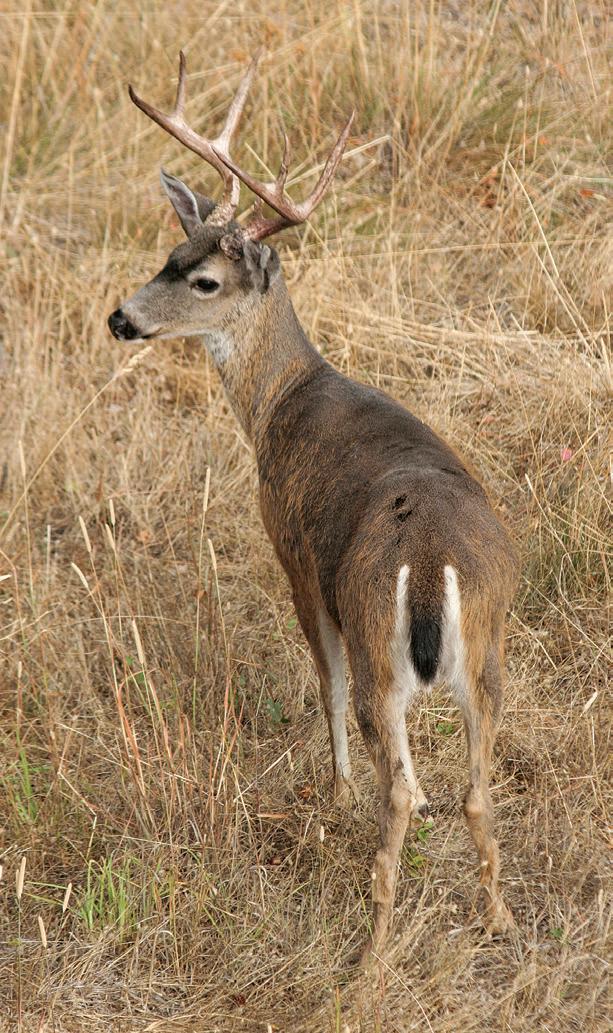




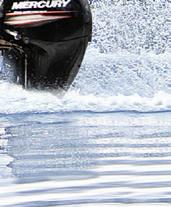

Iremember the first time I crossed the mighty Mississippi River, when my friend and I were on a cross-country trip from California to Washington D.C. I was in college and had barely been out of California (save for trips to Lake Tahoe/ Reno and one short trip to southern Oregon), so I was already excited with every state line we were traversing.
On Interstate 80 at the Iowa/Illinois border around Davenport we drove the bridge over the Mississippi, and I was in awe of how wide the river was. I thought about the scope of the Mississippi and how it flowed all the way from Minnesota to the Gulf of Mexico; about Tom Sawyer and Huck Finn; about the history of the Mississippi and its importance in the Civil War. Since then I’ve visited more cities along the river: Minneapolis/St. Paul, St. Louis, Memphis, New Orleans. It’s one of those waterways that’s full of life. Maybe someday I can fish its waters.
And as I’ve learned over the years, I can appreciate what these rivers mean to the local communities. They are the lifeblood of the people, whether it’s recreational or economic or spiritual, or all three. They are a part of the fabric of who these people are.
Obviously, I felt this way in working on our feature this issue on the fight to remove dams on two of Northern California’s iconic rivers, the Eel and the Klamath. Conservationists, from the California Trout representatives I interviewed for the story to local tribal organizations, see these rivers as cultural connections to the past and important components of their future.
“One piece of it that I think is really impressive is the tribal nations that exist there – especially the Yurok, Karuk and Hoopa – they’ve all done amazing work, both in highlighting the importance of this area and creating real restoration powerhouses for the tributaries and the mainstem of that system,” CalTrout legal
and policy director Redgie Collins said of the Klamath. “The grassroots organizations, the support from this, through multiple owners of this salmon facility, has been remarkable. They’ve really highlighted the importance of this watershed being one of the main salmon and steelhead rivers in California and Oregon.”
Collins calls the Klamath “an incredible system. To have salmon running from California to the Oregon border up to those clean headwaters of this upper Klamath spring-fed system will be amazing.”


And that’s what we all want to see from these two special rivers. The Eel and Klamath are as relevant to their people as the Mississippi is for those residing in the Heartland of America.
We need these rivers to flow freely. In the Klamath and Eel, the salmon and steelhead need that even more than we do. Let’s get removing these aging dams done. -Chris Cocoles






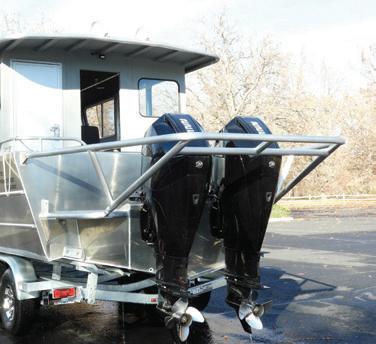







We’re not ashamed to admit it: Todd Kline has the kind of life we wish we could experience. Kline’s a former professional surfer, a successful co-angler on the FLW Tour and a Southern California bass guide, plus he gets to travel the world as a commentator for the World Surf League’s telecasts. Todd has agreed to give us a peek on what he’s up to each month. For more on Todd or to book a guided fishing trip with him, check out toddklinefishing.com, and you can follow him on Instagram at @toddokrine. –The Editor




Here’s my workspace at another U.S. Open event, this one for surfing, where I was a commentator. (TODD KLINE)



The U.S. Open is coming up this month at Katherine’s Landing on Lake Mohave.I went out to prepractice before the lake went off limits and was able to find a real desert donkey. (TODD KLINE)

Practice fishing for Lake Mohave’s U.S. Open largies means a chance to land a bonus striped bass. (TODD KLINE)


It must be fall, as the baitfish have started to hit the banks and bass are on the chase. Get outside and get your bass this month! (TODD KLINE)

I got the call to commentate on three major surfing events, including the East Coast Surfing Championships in Virginia Beach, Virginia. We finished early, which allowed us to get out and chase the cobia. (TODD KLINE)









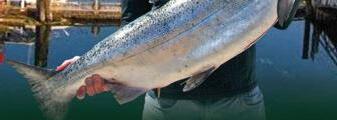
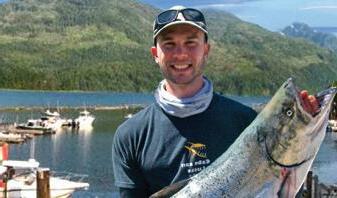



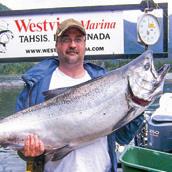


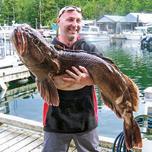
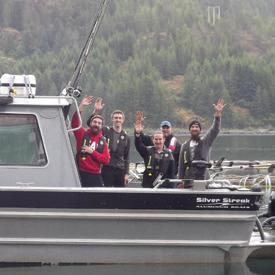













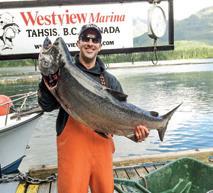



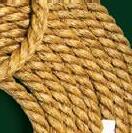

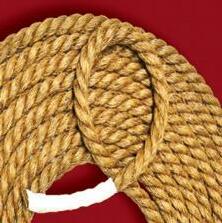

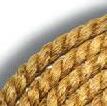


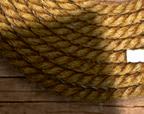






Our remote Alaskan fishing lodge is situated on the upper stretches of the beautiful Egegik River. You’ll watch some of Alaska’s most stunning sunrises, complete with a distant, active volcano. We are a fishing camp specializing in coho fishing, brown bear viewing, and flyout fishing adventures to even more remote destinations in the Last Frontier.



The Egegik River is touted by many experienced anglers as the best silver salmon stream in all of Alaska. Becharof Lodge On The Egegik River was the first fishing lodge to become established on the breathtaking Egegik River, and is less than a 5 minute boat ride from some of the best fishing holes on the entire river.



Included in your fishing trip:
•5 days fishing/5 nights stay in camp
•Experienced, fully guided fishing.


•Comfortable cabins furnished with beds, cozy comforters & bedding.
•Home cooked meals, snacks, and nonalcoholic beverages.
•Transportation from the lodge to prime fishing holes on the Egegik River.
•Freezing and vacuum sealing of your fish, up to 50 lbs., per angler.
For your shot at winning great fishing and hunting products from California Sportsman and Coast, send your full-resolution, original images with all the pertinent details – who’s in the pic; when and where they were; what they caught their fish on/weapon they used to bag the game; and any other details you’d like to reveal (the more, the merrier!) – to ccocoles@media-inc.com or California Sportsman, 941 Powell Ave SW, Suite 120, Renton, WA 98057. By sending us photos, you affirm you have the right to distribute them for use in our print and Internet publications.


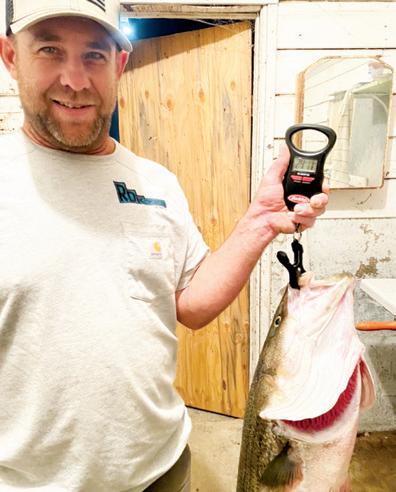
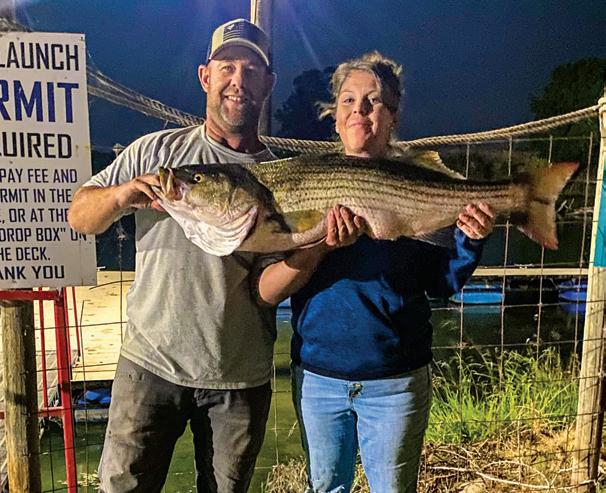

Jake Morrelli
Photo
his dad
winner

a nice Chinook,
monthly Coast
in
he
fathers
Hart Jr.
monthly Coast Hunting Photo Contest winner,
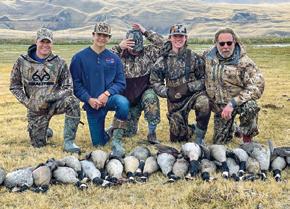
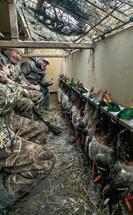

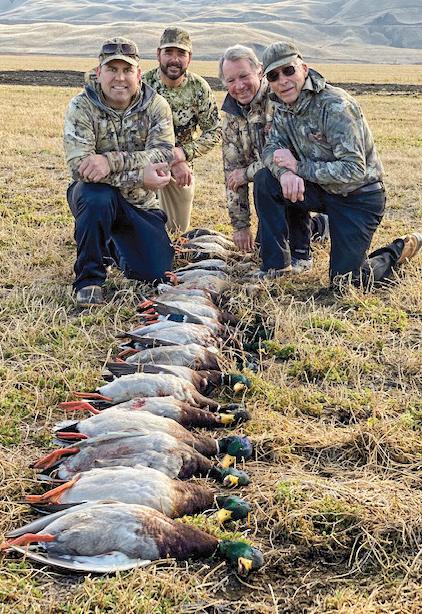

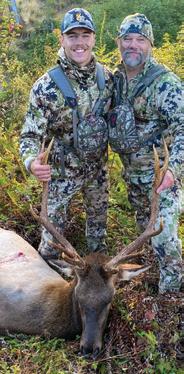
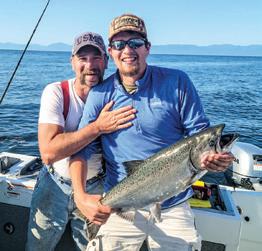
son Brennon and Randy’s Washington archery
him a
California Sportsman

Renton,
affirm you have the right to
or
Powell Ave
sending


Northeast Zone waterfowl season opens
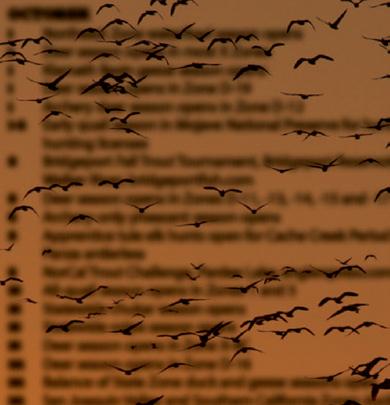
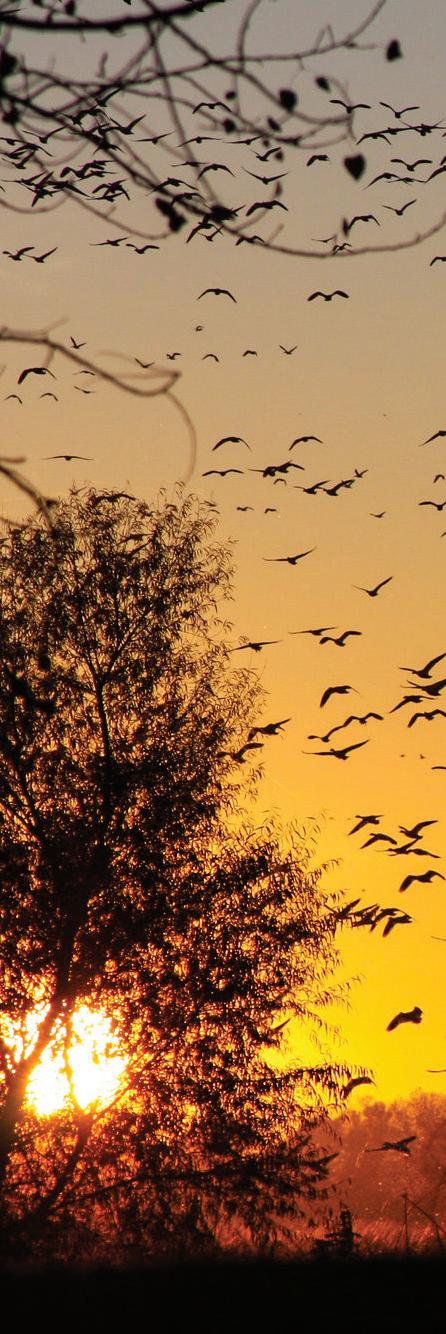
Deer season opens in most X Zones
Basin geese season opens
season opens in Zone D-19
deer season opens in Zone D-12
quail season
Mojave National Preservefor hunters with junior
Fall Trout Tournament, Bridgeport Reservoir and West Walker River;
season

in Zones D-11, -13, -14, -15 and -17
pheasant season opens
tule elk hunts open for Cache Creek Period 1 bull and La Panza antlerless
Trout Challenge, Pardee Lake; anglerspress.com
season opens in Zones 1 and 3
chukar season opens
Statewide snipe season opens

Deer season opens in Zone X-9C
Deer season opens in Zone D-16
of State Zone duck and geese seasons open
Joaquin Valley and Southern California Zones duck and geese seasons

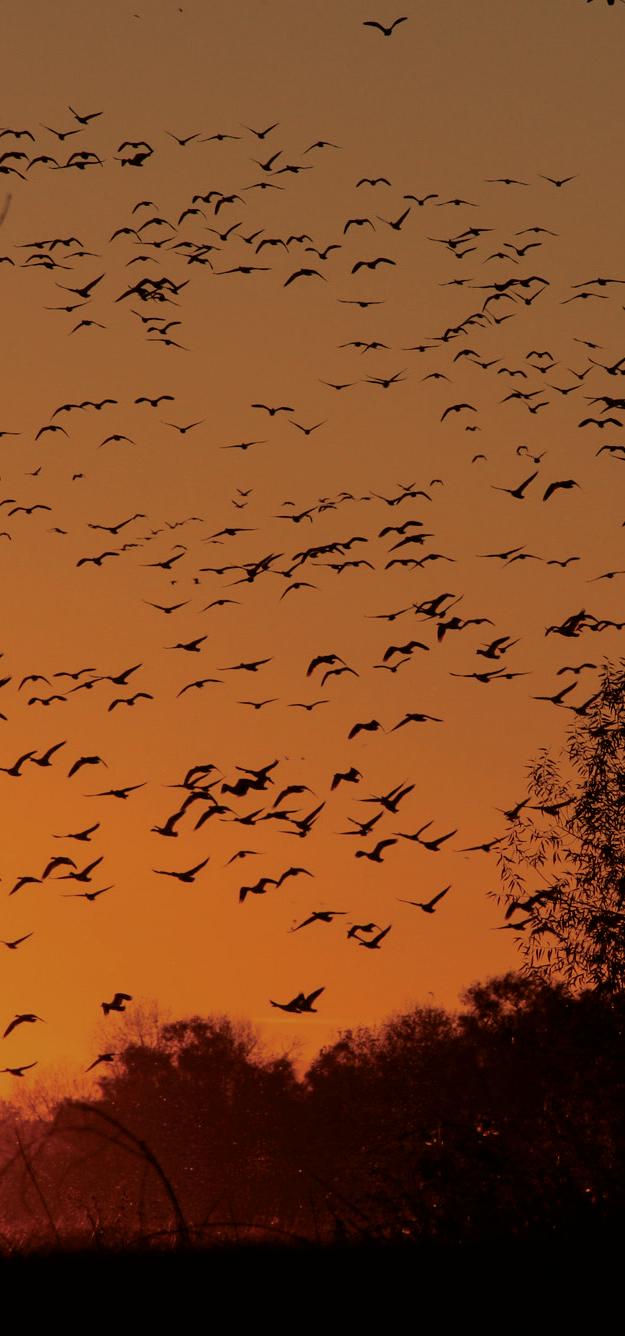
falconry waterfowl seasons open


Colorado River Zone duck and geese seasons open
Morrison’s Bonus Derby Weekend, Convict Lake; (800) 992-2260, convictlake.com/activities/fishing-convict-lake
County Zone white geese season opens
Deer season opens in Zone D-12
Hunter Liggett antlerless archery tule elk season opens
Nor-Cal Guide and Sportsmen’s Association Fundraising Dinner, Yuba City Fairgrounds; ncgasa.org/shop
Trout Challenge Tournament of Champions, Collins Lake;
Scaup hunting opens in most state zones
Zone black brant season opens
of State black brant season opens
Coast Zone Canada geese season opens
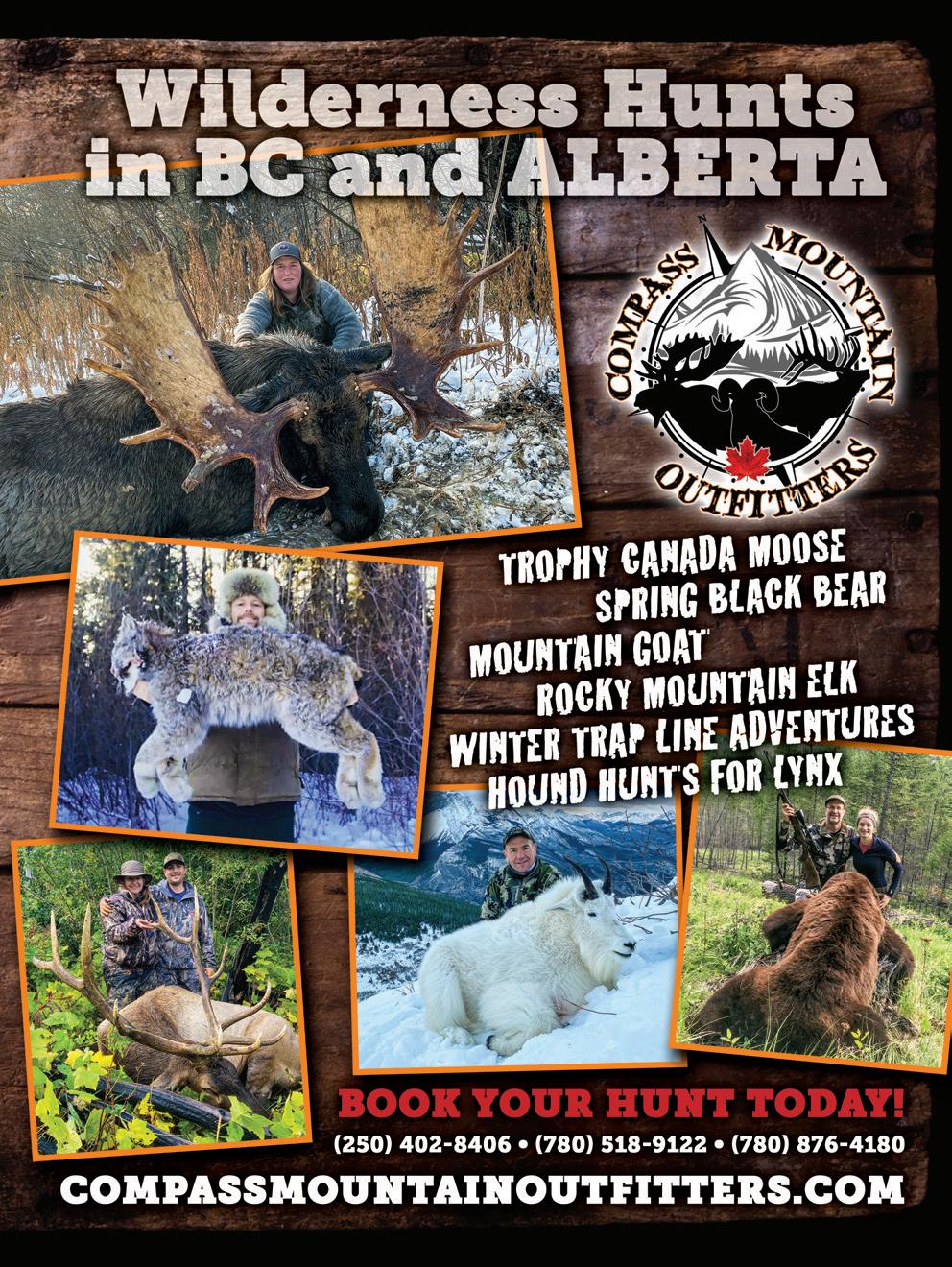

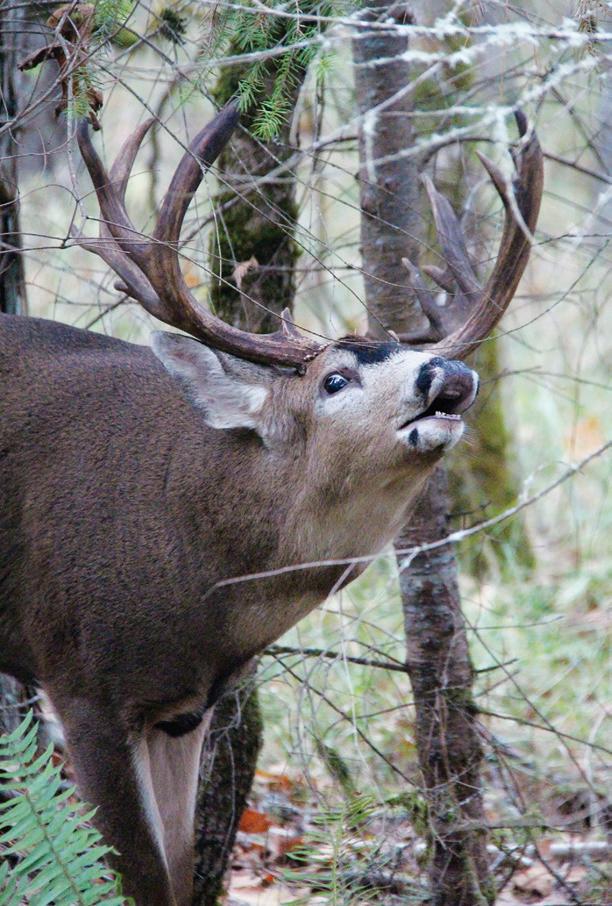
Having hunted big game throughout the West for more than four decades, I rank consistently tagging a mature Columbia blacktail buck to be the most challenging of all. On top of that, I think October is the toughest time to kill a mature blacktail.
No matter where you hunt blacktails, the October prerut and the peak of the rut that starts later in the month are important to understand. The moment a buck strips its velvet in late August or early September, testosterone levels begin to increase, meaning the prerut has begun. During this time you’ll see big bucks start letting smaller bucks move well ahead of them when going to feed and bed. You’ll also see mature bucks using different trails than younger bucks.
A mature buck’s number one goal in early fall is to stay alive by avoiding predators and eating nutritious foods. In early to mid-October, the movement of a mature buck is largely restricted to its core area; that’s why summer scouting is invaluable. A buck’s core area is where it beds during the day, and it’s usually surrounded by brush with multiple escape routes. Core areas can hold food, too. In semiopen habitats, bucks sometimes bed on a vantage point, and they’ll often utilize multiple beds, depending on thermal shifts and wind direction.
There’s a lot happening this month in the woods and marshes of California. Big game seasons are underway and bird hunting continues to build with the anticipation of the migration. So, what better way to kick off the season than with duck burgers? Actually, this recipe works with ducks or geese, even big game. And it’s interesting how opinions vary on whether the hamburger actually originated in Hamburg, Germany, or has deeper roots among the Mongol horsemen. Any way you grind it, hamburgers with all the trimmings make a popular menu item.
Lightly seasoned ground or finely chopped waterfowl makes a great burger option. Don’t forget to amp up the flavors with your favorite burger additions. To keep with German flavors, this burger is served on a bed of caramelized onions and sauerkraut and topped with a cheddar/Swiss cheese sauce.

1½ pounds ground or finely chopped
With California’s waterfowl seasons approaching, that limit of birds can create a delicious burger, and cookbook author Tiffany Haugen says this recipe works for big game too. (TIFFANY HAUGEN)
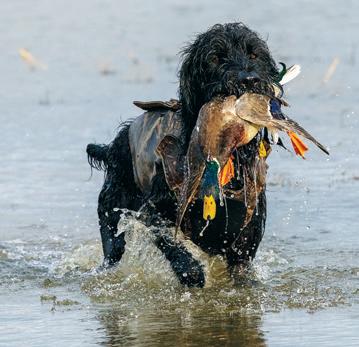
waterfowl breasts and thighs
2 tablespoons stone ground or Dijon mustard
2 tablespoons finely chopped parsley
1 teaspoon black pepper
1 teaspoon paprika
½ teaspoon granulated garlic
½ teaspoon salt
Olive oil for pan frying
1 tablespoon olive oil
1 tablespoon butter
One onion
1 cup sauerkraut
Four pretzel buns
In a medium bowl, mix ground or chopped waterfowl with mustard, parsley and spices. In a large skillet, sauté onion in olive oil and butter on medium-high heat until lightly browned and caramelized. Add sauerkraut and continue to sauté for two to three minutes until there is no liquid in the skillet. Remove onion and sauerkraut mixture and set aside.
Add another tablespoon of olive oil to the skillet and place on medium heat. Form four patties from meat mixture and place in skillet. Turn heat to high and brown patties on each side. Turn heat to medium-low and finish cooking to desired doneness. Place onion/sauerkraut mixture
on the dressed (mayonnaise or mustard) bottom of the toasted pretzel bun, top with waterfowl patty and drizzle with cheddar/Swiss cheese sauce
1 tablespoon butter
1 tablespoon flour
1 cup milk
½ cup shredded cheddar cheese
½ cup shredded Swiss cheese
In a small saucepan, melt butter on medium-high heat. Add flour and whisk for one minute. Slowly add milk, whisking constantly. Remove from heat and stir in shredded cheeses. Keep warm until ready to serve. CS
Editor’s note: For signed copies of Tiffany Haugen’s popular book, Cooking Game Birds, send a check for
$20 to Haugen Enterprises, P.O. Box 275, Walterville, OR 97489 or visit scotthaugen .com for this and other titles.


During the first two weeks of October, a blacktail buck tries to eat as much quality food as possible to build fat reserves for the upcoming rut. The rut is when a buck’s second goal in life kicks in, which is simply to perpetuate the species. The first half of October is roughly when you want to spend more time glassing than walking. If summer scouting reveals a couple good bucks in an area, glass all day long – sometimes days in a row –scouring the land.
Glassing from a distant vantage point is wise because a buck’s movements are very nocturnal in early October; yet if they find themselves near a good food source come daylight, they might bed right in it and stay there much of the day, if not all day. I’ve spotted many bucks most folks drive by without even looking for. If the sun comes out, it will often
expose bedded bucks, which makes them easier to locate, so stick with it.

Blackberry patches, tall grass, stands of fireweed and even Scotch broom thickets are ideal habitats to glass for bucks. In addition to offering food, these habitats provide cover, and bucks often bed in them all day. Search the edges of areas burned by forest fires, too.

In mid-October, things start to happen in the blacktail woods. Personal experiences lead me to believe the blacktail rut starts sooner in the Coast Range than any habitat. I’ve seen big, swollen-neck bucks chasing does as early as October 14, and inspected empty stomachs of rut-crazed bucks between the 15th and 20th. An empty stomach indicates a buck has quit feeding and is focused on finding does, and this means breeding takes
priority over eating.
October 15-22 is what I consider the peak of the prerut. This is when mature bucks cover ground in search of females they’ll soon breed and bucks they’ll soon fight for breeding rights. Focus hunting efforts on horizontal ridges, which are the places does must pass through from their elevated bedding areas to low-elevation feeding zones. Bucks can cover a lot of ground when maintaining the same elevation, as can hunters.
A buck is searching for where does have urinated, and it will smell it to sense estrogen levels. Once a buck finds what it likes it will follow the doe’s tracks to her, hoping for a chance to breed. A buck follows scent left by the doe’s every step, identifying odors laid down from the interdigital glands located between the split toes of ungulates.

I speculate that the slightest spike in estrogen levels results in a more intense prerut and an earlier rut timing in the jungle-like Coast Range.
Next comes the Cascade foothills, where bucks in the 1,000- to 2,500foot elevation range grow active by October 22. Mature bucks living on the valley floor are the toughest to find, even during the pre- and peak rut periods, as they live year-round with the does they’ll breed and the bucks they’ll fight, meaning they don’t have to travel to discover what’s happening.
While the first two weeks of October find me glassing a lot for bucks, between the 15th and the 21st I’ll start covering ground on foot. I wait for heavy rains to fall, as this makes the going quiet and helps knock down my scent. My goal is to find bucks on the move and locate as many does as I can. When does are located, plot their location on a map, as you’ll return to these places
in order to find bucks on the move, sometimes multiple times a day.
On October 22, things change. This is when I start rattling and calling, because this is when bucks get aggressive. I don’t think as much ground is covered by bucks over the ensuing week, as they’ve found what they’re looking for. Now they’re waiting for does to come into heat and fighting bucks for breeding rights. Simulating fighting sounds can give you an advantage.
I’ve seen the most and biggest bucks during the general rifle season around Halloween. From now until season’s end, anything can happen. I’ll often rattle from multiple setups at this time, especially if the weather is miserable.
The harder it rains and the colder it is, the better for big buck movement. While photoperiodism dictates hormone levels, cooler temperatures
make it more comfortable for a buck to cover ground. On wet, windy, cold days, hunt all day long.
No matter what part of October you like to hunt most, pay attention to the deer and watch how their behavior changes. Devote time to glassing the first half of the month, and don’t be afraid to hit the brush the second half.
When it comes to trophy blacktails there are no written rules as to what will happen, and when. But one thing is for sure: Every time you hit the blacktail woods you’ll learn something, just as I continue doing after a lifetime of passionately pursuing these, the most challenging deer to hunt in all of North America.
CS
Editor’s note: To order Scott Haugen’s bestseller, Trophy Blacktails: The Science Of The Hunt, visit scotthaugen.com. Follow Scott on Instagram and Facebook.
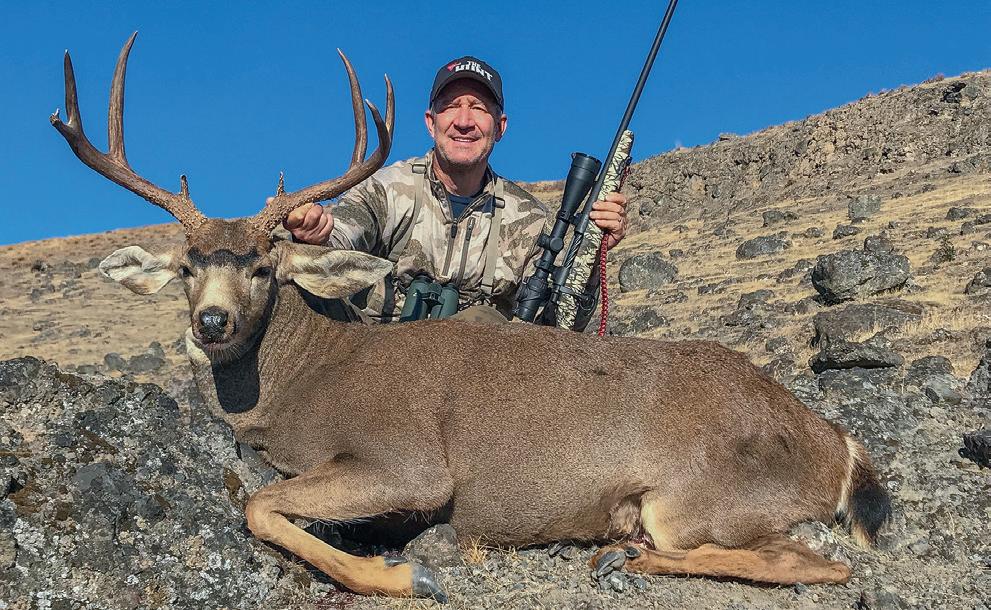


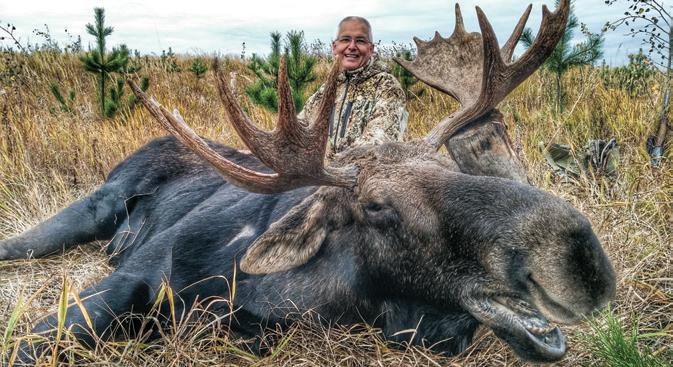

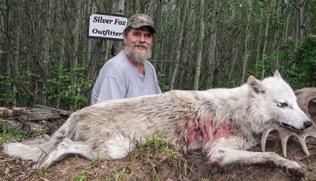
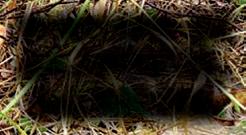
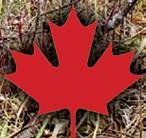
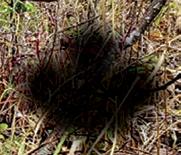
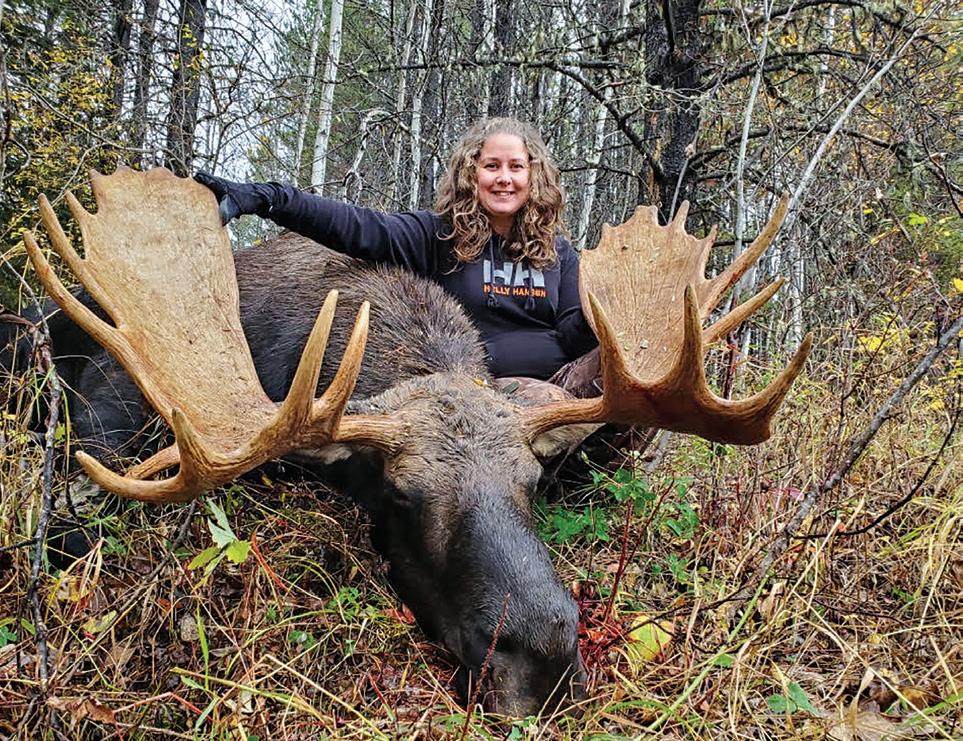
While hunting from a comfortable truck camp, author Cal Kellogg had solid success harvesting meat bucks like this blacktail. But when he stumbled on a large swath of rugged roadless canyons to the east of his hunting area, he became determined to explore it in search of a special deer.

Iinched out to the edge of the rimrock and was careful to stay in the shadows. I didn’t want to be seen.

About 200 yards to my left a narrow spine knifed into the canyon, terminating in a tangled sea of white thorn, oak trees and manzanita near the creek far below.
Down about 150 yards from the top, the spine made a dogleg turn to the south. At that point there was a small flat spot where a gnarled California juniper tree clung to the lava, absorbing enough nutrients from the scant topsoil to survive. The tree’s branches reached nearly to the ground. I’d found the perfect spot.
The tree would give me total concealment. I could lurk beneath
those branches in relative comfort while enjoying a commanding view.
To the north the country was steep and rugged. There was a lot of cover, but also plenty of open areas.
The shooting might be long, but that summer, in addition to a nonstop grind of physical workouts, I’d performed a good deal of shooting practice with my pet 7mm under field conditions. I was ready!
I’d seen enough and ghosted back from the rims, quietly retreating toward the tiny backpacking tent concealed in a small grove of scrub pines. By the time I reached camp daylight was fading. I gobbled some trail mix, guzzled some water and crawled into the tent. When the sun came up, I’d be at my stand, and if need be, I’d spend the next seven days hiding under that juniper from dawn to dusk.
WHAT HAD BROUGHT ME to this remote spot in the southern Cascades – a full nine hours’ hiking time from my F-150? To answer that question, we’ve got to turn the calendar back 60 months.
Five years before, I’d begun hunting a canyon west of my remote spike camp. There was a good deal of hunting pressure in the canyon, but my postup-glass-and-wait hunting style served me well, and I was generally able to tag a decent meat buck.
The second year, I noticed one large swath of land that appeared devoid

of hunters. Waiting in the predawn darkness, I’d see the flashlight and headlamps of hunters inching into the canyon all around me. To the northeast I’d see the headlights of four-by-fours navigating logging roads. But directly to the east and to the southeast it was always pitch dark. I was intrigued.
I did a little offseason map work and learned that there was a wilderness area and a game refuge to the southeast, which explained the lack of headlights in that direction. The area to the east encompassed several large canyons that ultimately climbed out of the oak woodlands and disappeared into dark timber at about 4,500 feet in elevation. For whatever reason, those canyons were roadless.
“Boy; if a guy wanted to go on an epic blacktail backpack hunt, that would be the place. Lots of deer and zero pressure,” I thought.

But since I was regularly filling tags while hunting out of a comfortable truck camp, I didn’t consider such a


“Vast, rugged, roadless and rarely visited” is how Kellogg saw the hunting area that he was attracted to. He was determined to penetrate these remote canyons in search of an epic buck, far away from his truck. (CAL KELLOGG)
hunt too seriously.
AS TIME MARCHED FORWARD, more and more hunters started showing up in my area and of course I was getting older every year. I’d done a good deal of solo backpack hunting with archery gear, so the desire to take on a new challenge slowly grew stronger.
Finally, after four years of hunting my canyon, enough was enough. I didn’t like the increasing hunting pressure and wanted to explore the dark remote canyons while I still had enough steel in my legs to make it happen.
The offseason that year was an exciting blur of planning, running, calisthenics, stretching and trail hiking with a full pack. There was a lava-covered knob atop a ridge in the roadless area I’d been watching. I dubbed it “Knob Ridge.”




Using the knob as a central landmark, I studied the area from every angle using Google Earth. The west face of Knob Ridge looked down


on a spring-fed creek and seemed to be dominated by rimrock. About a quarter-mile south of the knob the ridge terminated into a drainage that featured an east-west-running creek that ultimately dropped into the main creek.
The junction of those creeks would be my jumping-off point. I’d travel cross country until I reached the junction, cross the main creek above the tributary, fill all my water bladders and then ascend Knob Ridge
and set up a well-hidden camp. Come the last week of October, that’s exactly what I did.

I planned nine days for the hunt. The day before the season opened, I hiked for about six hours with a 60-pound pack and set up the tent for the night. Opening morning, I spent around two hours watching the area where I’d camped, listening to rifles popping off to the west. When things quieted down, I broke camp and was on the move again.
By 1 in the afternoon, 18 liters of water were hanging in the shade, the tent was up and I was taping a small blister on my heel. As I worked, I heard a noise and turned to see a doe and a two-point sneak past less than 50 yards away.
The next morning, I settled in under the juniper while the stars were still shining bright. Working slowly, I set up my ultralight stove for some post-dawn coffee, followed in late afternoon by a dehydrated dinner. Unless I tagged a buck, I wouldn’t be leaving the cover of the stand until the sun was down. The spot was more comfortable than I expected; I could sit, stand and even lay down without showing myself.
Once the sun was up, I used my range finder to get a feel for the area, leaned my pack up against a rock to serve as a shooting rest, and then spent the rest of the day glassing. For the day I spotted 27 deer, including a pair of legal bucks, and a black bear. Both bucks and the bear would have been easy to harvest, but with all the planning and preparation I’d done, I wanted to invest some time in getting an exceptional buck.
MONDAY, TUESDAY AND WEDNESDAY unraveled much like the first day on the stand. I maintained a low profile and saw over 20 deer every day, but nothing I wanted to tag. The weather was fair and mild, and I’d established a pattern. Early in the morning, I’d see deer filtering up from the creek to bed in the shade under the rims. Around noon a few deer would get up and move around and there would be sporadic activity all afternoon as deer browsed and repositioned.
When I slid into my sleeping bag Wednesday night and broke out the Jack Reacher novel I’d been reading, it was noticeably cooler. A small storm was slated for the weekend and I was feeling very optimistic.
The next day was Halloween, and that has always been a lucky deer hunting day for me. Over the years I’d taken some dandy Halloween

It took a lot of planning and preparation, but when this handsome buck showed up, Kellogg’s vision quest came full circle. Then the truly hard work began, though it was well worth it. (CAL KELLOGG)


blacktails, including a 150-plus-inch four-by-four when I was 16 years old.
I slid out of the tent early the next morning. I was hungry, so I shoved a pair of my favorite dehydrated meals into the pack: oatmeal and strawberries for breakfast and spaghetti with meat sauce for dinner. Wasting no time, I slid the pack on, grabbed my rifle, hiking sticks and headed for the stand.
Just as it got light enough to see, I spotted two does and two fawns about 125 yards away. The does were feeding and the fawns were milling around. Presently a big gray fox trotted out. The fawns wanted to play, but the fox was having none of it. He shot the quartet of deer with an appraising look and trotted into the brush.
I thought something else might happen and reached into a pouch on the pack and grabbed my video camera. When I looked back up, I saw a lone deer standing at the edge of the brush further up the canyon. Up went the binoculars and my heart skipped a beat.
It was a buck, a big buck. I didn’t wait to count points or any of that. Its antlers were high, and it seemed to have points everywhere. I picked up the 7mm and steadied it over the top of the pack. The buck wasn’t moving or feeding. He was just standing at the edge of the brush, looking and smelling for danger.
I slid the safety off, settled in for a second and the rifle went off. I thought I’d missed at first, because when my eye opened after the shot I could still see the buck in the same spot, but a beat later I realized he was no longer standing. Slowly the buck slumped over onto his right side and I knew I had him.
I sat watching for several minutes just to make sure and tried my best to mark some landmarks to make it easier to find him. Before I left my stand, I zapped the buck with the rangefinder. He was 241 yards away, which is a chip shot for the hunters I watch on YouTube. But for me, that’s
While not the author’s biggest blacktail, his buck sported a tall and wide four-by-four rack and multiple eye guards. All things considered, he describes the hunt as the best of his life so far. (CAL KELLOGG)

a long way and I was pumped!
CLIMBING DOWN, NOTHING LOOKED the same. The brush was way higher and thicker than it looked, the ground was steeper and there was a tremendously thick dry creek bed to navigate. It took me about 45 minutes to find the buck, but when I did, I couldn’t believe my eyes.
The buck sported a tall, elegant four-by-four set of antlers with multiple eye guards and the points polished ivory white. Once the adrenaline wore off and the photos were taken, the hard work got started.
I skinned and quartered the buck and packed all the meat back to the spike camp. It took me two days and three trips to get my camp and the

deer back to the vehicle, but I spent the winter eating top-notch venison and running my fingers over the beautiful antlers.
Since then, I’ve reflected on the hunt often and I’m blown away how opportunity, planning and luck came together to make for one of the greatest hunts of my life. The hunt was physically challenging. The pack out tested me and left me sore, but the sense of accomplishment I feel hasn’t faded.
If you’re like me and find yourself looking at a remote canyon or scanning a wilderness area on a map thinking, “What if?” come up with a plan, put in the work and pursue your own vision quest. Take it from me; you won’t regret it! CS



October is here, the best month of the season if you’re a West Coast bird hunter with a gun dog. From doves to ducks, geese to crows, chukar to pheasant, turkey to snipe, there’s no shortage of thrilling hunts to be had.
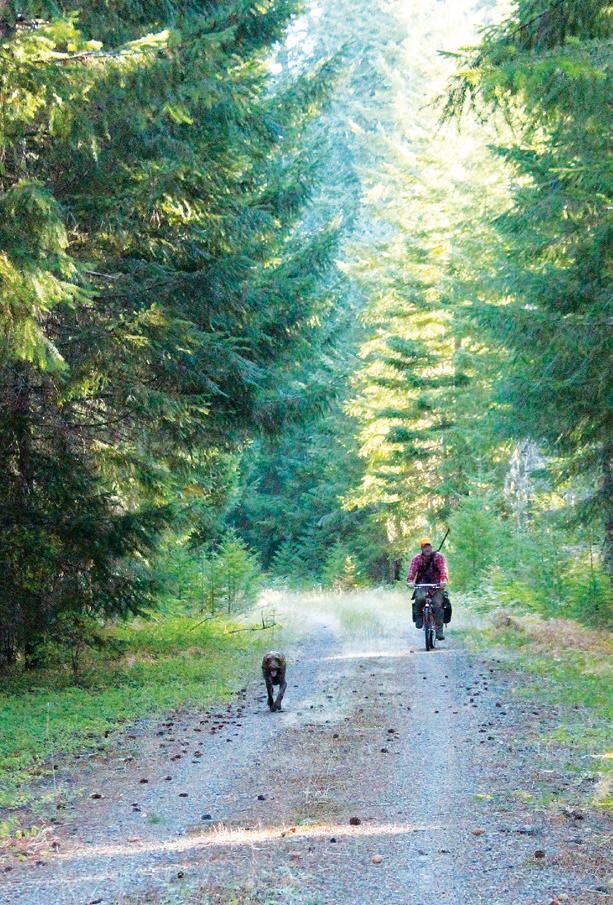
One of my favorite hunts is heading into the forests in search of multiple species. In Western Oregon, where I live, I may find ruffed and blue grouse, and mountain and valley quail – sometimes all in the same day.
BOTH THE CASCADE AND Coast Ranges hold all four upland gems. Typically, you’ll find valley quail at lower elevations, ruffed grouse from creek bottoms to the high peaks, and mountain quail and blue grouse from mid- to high elevations. Don’t be surprised to find valley quail above 2,500 feet, especially if newly logged units provide food and cover. It’s not uncommon to find both quail subspecies in the same place, especially as winter approaches and mountain quail drop in elevation.
Ruffed grouse are largely homebodies. They love lowland river and creek habitats, but also thrive in dense, 10- to 15-year-old Douglas fir. Prime ruffed habitat consists of thick cover bordering semiopen terrain with a nearby creek. These riparian zones also hold good valley quail.
“In Western Oregon we’re finding sooty grouse prefer older stands of Douglas fir timber situated near clearcuts,” shares Kelly Walton, assistant game bird biologist for the Oregon Department of Fish
and Wildlife. “We’re also finding a surprising number of sooty grouse occupying very rugged terrain that’s been disturbed by landslides, logging, even wildfires. Where a disturbance creates an opening in steep country, and is near habitat that holds food, water and cover, we’re finding a good number of blues, but the big timber is key.”
“Blue grouse will occupy different habitats across their range based on food availability,” offers Walton. “Early in the season insects make up a large part of all the birds’ diets, so spend time in open areas where bugs thrive, near habitats grouse and quail feel safe in.”
“Both male and female mountain quail incubate a nest, and when they
hatch, join as a family unit,” notes Walton. “They’ll even join other family units. These birds can hold so tight, like nothing I’ve ever seen.”
MOST HUNTERS DRIVE ROADS in search of birds, then turn their dogs loose. The edges of logging roads are places all four bird species can be found in the morning and evening, gathering food as well as grit.
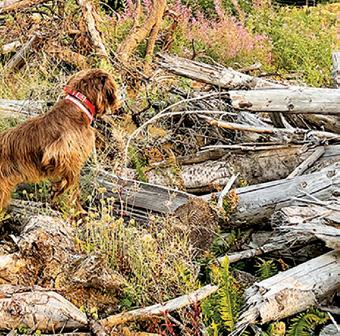


Gated roads that allow nonmotorized access are some of my favorite habitats to hunt. I like taking off on a mountain bike, letting the dogs work ahead of me.
This is big country, so don’t expect to go out and shoot all four birds in a day, though it’s possible. With these birds it’s all about covering ground
and that takes time.
If you’re fit to hike and your dogs can cover ground, focus efforts along old cat tracks – rudimentary roads that were punched into the forest to access logging sites. If put in near stands of mature timber and logged units, these crude roads can hold all four species of birds.

Ruffed grouse, valley quail and blue grouse hold well for a dog. Early in the season blue grouse hang close together as they feed. These are big birds that leave a lot of scent.
On these hunts, start early in the morning to beat the heat; evenings can also be productive. Your dogs can cover a lot of ground, so be sure to have plenty of fresh water. Make sure their toenails are trimmed with no





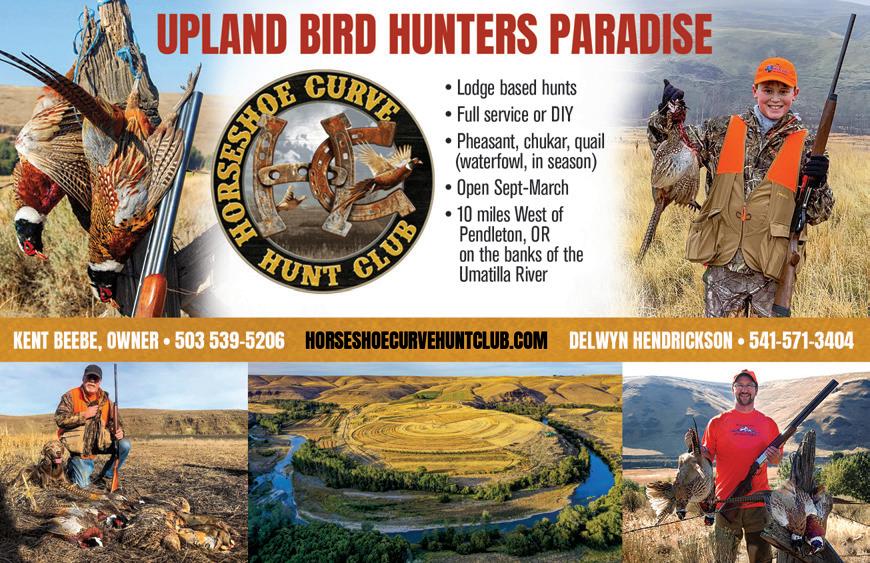
rough edges, as the ground is rocky and hard and you don’t want to deal with split or torn nails.



Be sure the long hair between the toes and pads, as well as inside the ear canals, is trimmed because grass seeds can be prevalent if it’s dry out. Not until we get a series of hard rains will grass seeds subside, so it’s a good idea to bring a fine-toothed grooming brush, even scissors to cut out knotted fur.
If running on rock and dry dirt, check your dog’s pads to make sure they’re not split or worn too thin. Make sure your dog is in good shape and not overweight; if they are, don’t push too hard, for we all know a driven gun dog doesn’t know when to stop. CS
Editor’s note: Scott Haugen is a full-time writer. See his puppy training videos and learn more about his many books at scotthaugen.com and follow him on Instagram and Facebook.
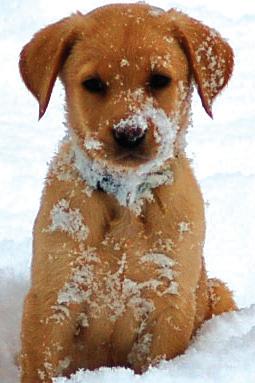


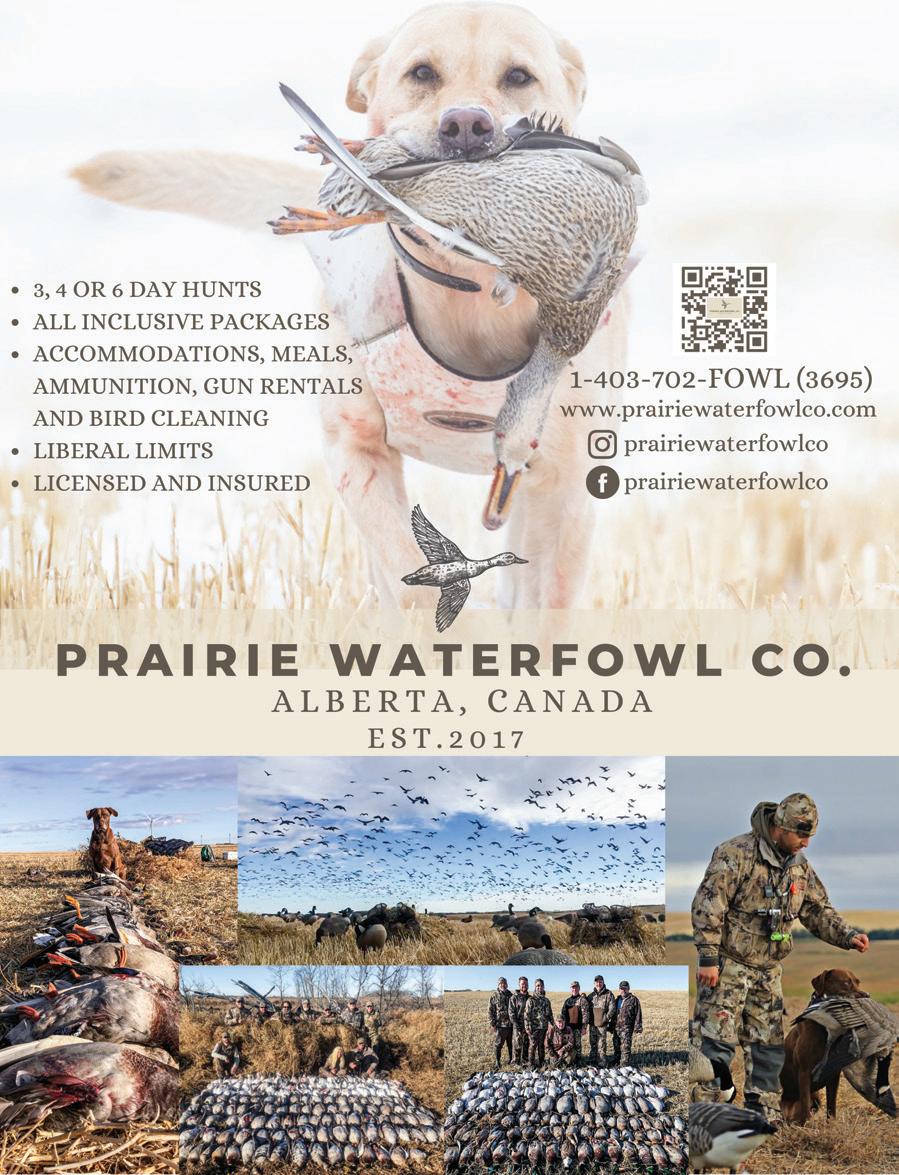

alumagrips.com
Limited quantity, $23.50 per set, available on the Specials page only – www.alumagrips. com/specials
Custom-designed three grooves, clear type II anodized finish, tangless ambi-safety relief (pocket on backside can be machined upon request).

Slimline, approximately .160 inch thick. (Slimline hardware is required.)hardware is
black-hills.com
Black Hills Ammunition’s 10mm HoneyBadger has deep flutes designed for optimum terminal performance without reliance on hollow points. The bullet penetrates deeply, cutting through bone and muscle to get to vitals. This is important when relying on your handgun for protection, including the possibility of bear attack. This is a solid choice for defense!

At Western Range Camps, we specialize in the design, manufacture and sale of the highest quality rangecamps, sheep camps, sheep wagons, commissaries, toy haulers and teardrop trailers. Handcrafted and built to last!
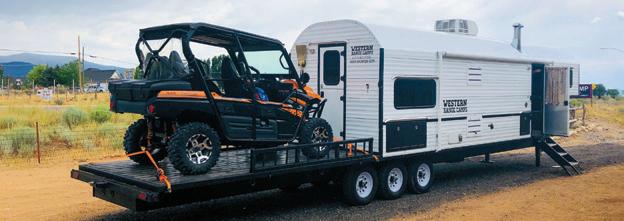
Exquisiteknives offers the finest in custom knives, worldwide. Shown is a gorgeous Young New York Special in Pearl. There is a snap in the handle that corresponds with the snap in the leather sheath for pocket carry – simply genius. A Bob Loveless pattern, John Young did a perfect rendition.

davistent.com/product/ sleeping-bag-cover
Our sleeping bag cover is a great way to protect your sleeping bag and add a little warmth. You can even sleep under the stars on a starry night! Roll your sleeping bag, pillow, and sleeping pad up and it’s a perfect bedroll to keep all your sleeping gear organized.


lymanproducts.com

The Lyman Ultimate Reloading System is the only kit you’ll ever need! Outfit an entire reloading bench with premium products designed to accomplish all steps in the reloading process. No other kit from any competitor can match this untouchable value! The Ultimate Reloading System includes top-of-the-line tools and accessories like our All American 8 turret press, Gen 6 Digital Powder System, Universal Case Trimmer, Pro 1200 Turbo Tumbler, and everything else needed to turn out high-quality rounds fast! Take your passion to the next level with the Lyman Ultimate Reloading System!

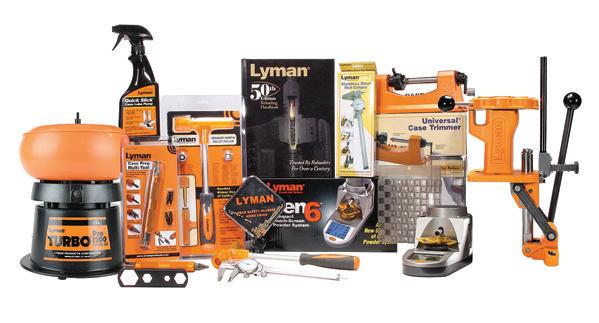
leelock.com


The Crab Cracker allows you to measure your Dungeness crabs to determine which ones are legal to keep, and then crack them in half over the top of a 5-gallon bucket, thereby separating the two clusters from the shell and guts. Crabs cleaned this way take up half as much space as whole crabs, so you can cook twice as many in your kettle.
The Crab Cracker has four different measurements to cover minimum sizes for Oregon, Washington, California, Alaska and Canada. It’s made from solid anodized aluminum, and greatly aids in cleaning Dungeness crabs.
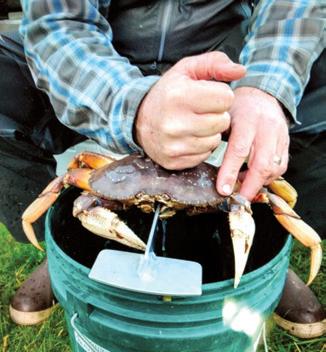


northriveroutfitting.com
We offer hunts of unmatched quality. Alberta whitetail, moose, caribou and goat. When you join us on a hunt in this spectacular and remote part of British Columbia, you will feel at home and welcomed into our hunting family. That same care, hard work and attention to detail goes into everything we do.

sagecanyonoutfitters.com
Love a hunter in your life? Buy them a Sage Canyon gift certificate. The perfect way to give the hunter in your life exactly what they want! Gift cards can be used toward anything on the ranch, including bird packages, guides, lodging and much more! Show them some love. $300, $500 and $1,000 certificate are available.
tacticaltargetsystems.com
Train with the targets professionals use. Our “self-defense” line of targets have been adopted by law enforcement agencies, federal departments, and military branches throughout the USA. The most educational “self-defense” training targets ever developed. These unique targets earned United States copyrights!

highadventureranch.com
High Adventure Ranch, the oldest big game hunting ranch in Missouri, was founded by Charles Puff in 1983. The ranch has over 30 big game species, with an estimated 2,000 animals. Our guides have over 70 years of experience. The ranch offers lodging, home-cooked meals, and full-service meat processing.


cawsf.org

California Wild Sheep Foundation is dedicated to putting and keeping wild sheep on the mountains by enhancing their environment with water installations and researching diseases, so that future generations may enjoy the majesty of the iconic California bighorn. Join us today and be a part of the future of wild sheep!
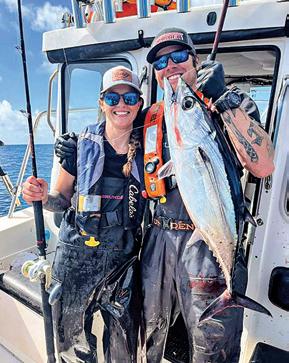
anglersedgesportfishing.com
New for 2023 we are offering gift certificates for our upcoming fishing season! These are guaranteed to put a smile on the face of your favorite angler! Call Saddie at 360-536-0525.
reliablefishing.com
Reliable Fishing Products was established in 2003 and makes the best cooler bags in the industry. They offer 10 bag sizes ranging from 18”x36” to 42”x90”, three kayak bags and three billfish/tournament blankets. They hold ice for days, are collapsible, soft-sided and have a drain plug at the bottom corner.
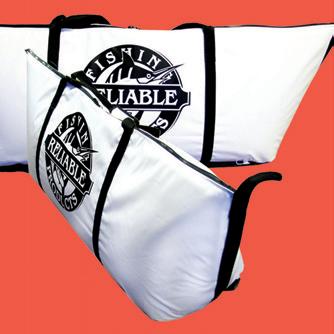


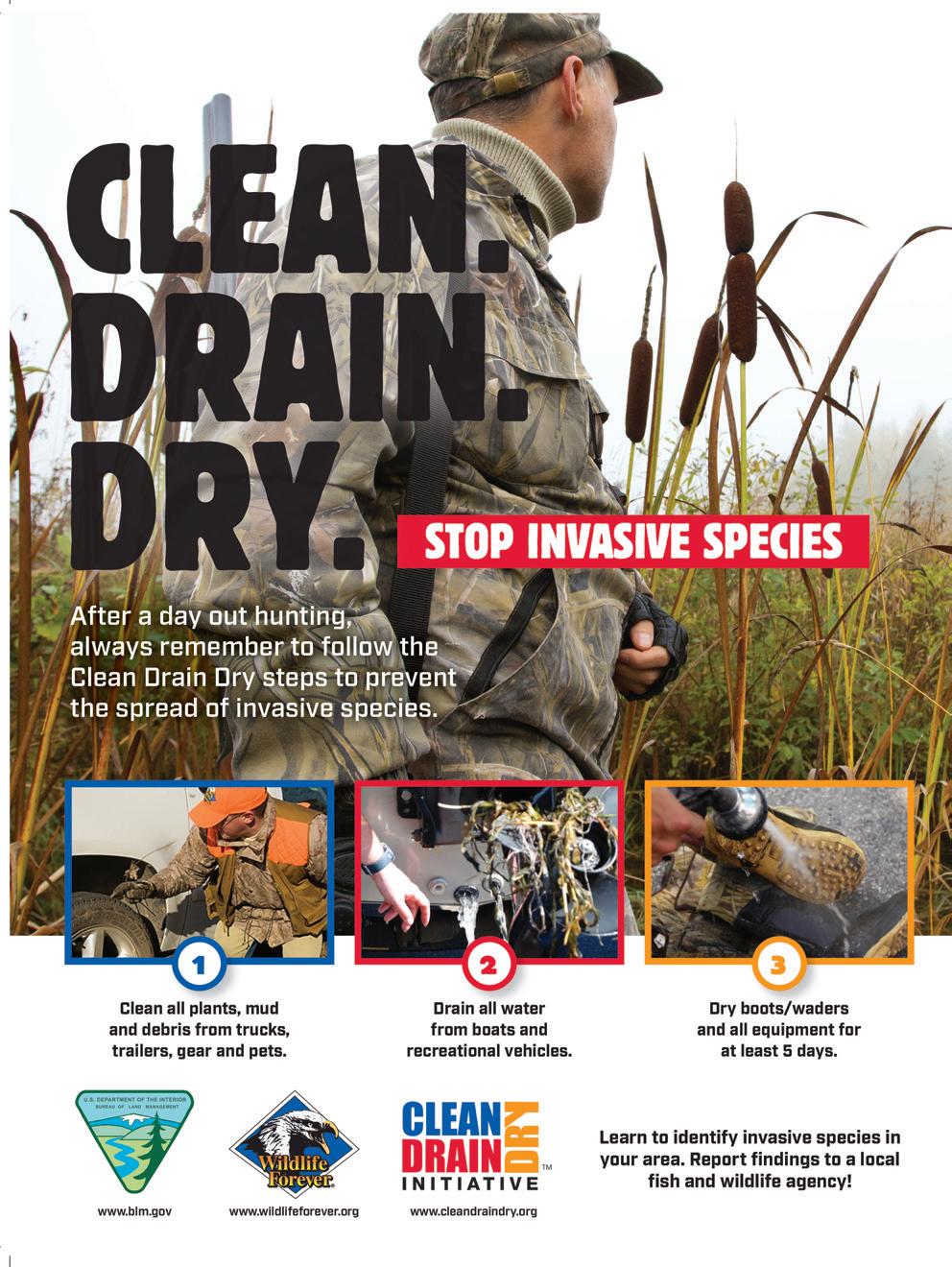
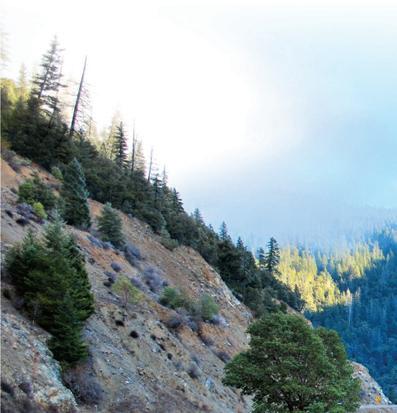 By Chris Cocoles
By Chris Cocoles
The obstacles in the way of anadromous fish returning to Northern California’s rivers to spawn have included everything from overfishing to the threat from invasive species to drought-like conditions that have created dangerously warm water temperatures and low flows.

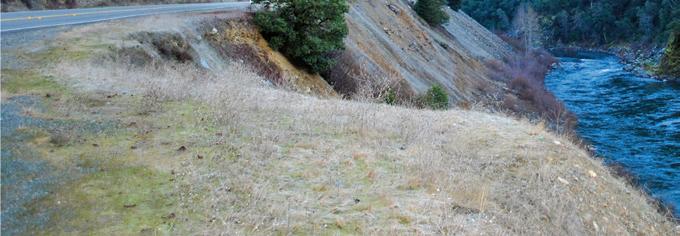

But on the Eel and Klamath Rivers, two of the gems of the North Coast, the upstream journeys of salmon and


Scott Dam, one of two dams that make up the Potter Valley Project, holds back Lake Pillsbury. Pacific Gas and Electric oversees the dams along the Eel and which are now the subject of a lawsuit. CalTrout’s North Coast regional director Darren Mireau says, “We’re very confident (dam removal) will get done. It’s just a big thing – big infrastructure.” (KYLE SCHWARTZ/ CALIFORNIA TROUT)
steelhead have been further hindered by man-made hurdles, which literally are stopping fish dead in their tracks.
But now, even with invasive pikeminnows finding quick meals in the form of salmon and steelhead smolts on the Eel, and Klamath salmon enduring both debris flows from nearby wildfires and disease dieoffs in the lower river, some light may be appearing at the end of the tunnel – or at least at the foot of dams sprinkled across the two watersheds.
After nearly two decades of fights, it appears that the removal of four Klamath River dams in California and Oregon could start by early 2023, and further south on the Eel, progress is being made toward the desperately needed tearing down of two dams, though legal issues will complicate the process and has the plan on hiatus.
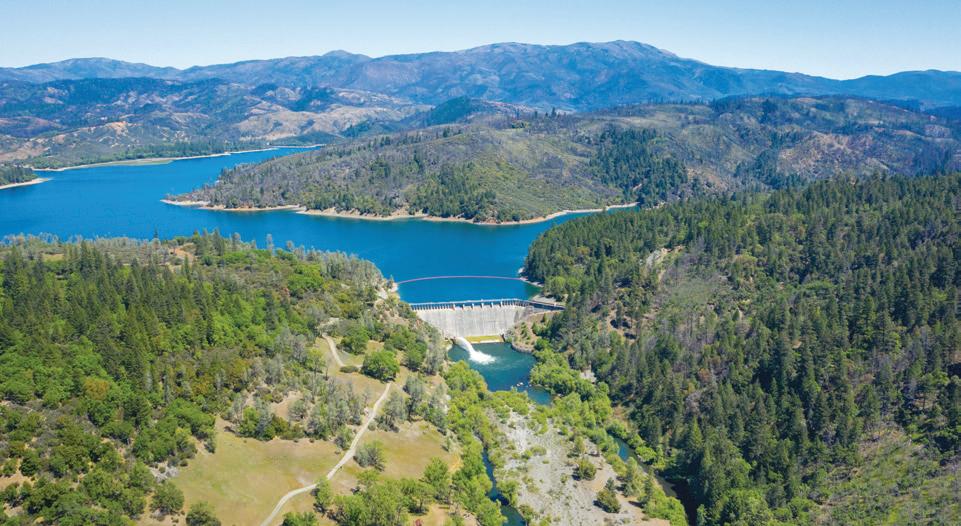
This is where the hard work of many state agencies, tribal organizations and conservation groups like California Trout comes in. They have collaborated for years on continuing to push and push back on resistance from power and
water companies, water users and agricultural interests. Redgie Collins, CalTrout’s legal and policy director, was asked about the importance of tirelessly pursuing dam removals on these rivers.
“We ask ourselves that all the time when we look at the hours of the strategic planning process as an organization. The money that goes into this, the time and effort that goes into dam removals,” he says. “And I think the core reason that we do this is that restoring them to full potential, where we can have that opportunity, is absolutely essential to life function. The ecological importance of having a free-flowing river and restoring those ecological processes is essential to everything that CalTrout does.”
“Barrier removal is one of our core strategic initiatives in our planning process, and you see this reflected with the largest environmental funders. You see foundations promoting dam removal throughout the country. And because of this you’re seeing a huge uptick in removals.”
And that’s a welcome sight to
behold, especially for the fish and those who fight to preserve them.
In a 2020 report, National Geographic wrote that America contained some 91,000 dams.
“Roughly 15,500 of them could cause fatalities if they failed, according to the National Inventory of Dams. Most of these dams were built many decades ago,” the story says. “By 2025, 70 percent of them will be more than a half century old, according to the American Society of Civil Engineers.”
Removing dams has been a slow task. In 2021, American Rivers reported that 1,797 dams had been removed in the United States since 1912. And while 69 were removed during the Covid-affected year of 2020, American Rivers says the nation still contains about 90,000 dams blocking rivers. “Dams harm fish and wildlife habitat and ecosystem health and can pose safety risks to communities,” the report adds.
The Klamath removal project involves the Iron Gate Dam in
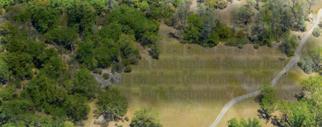








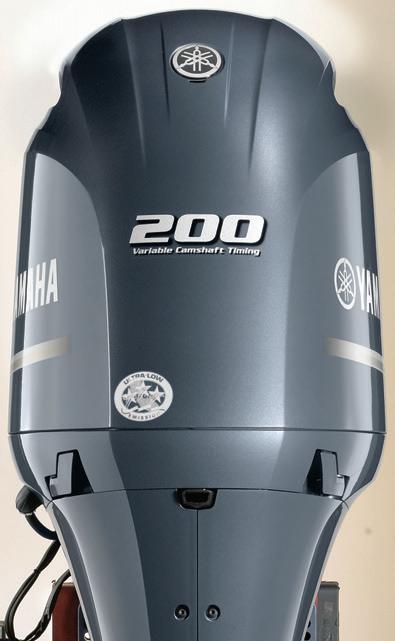
Siskiyou County – the first obstacle for the river’s anadromous fish – and three more dams further upstream: Copco No. 1 and Copco No. 2 in California, and J.C. Boyle Dam across the border in Oregon.
There are plenty of reasons to feel optimistic as the trend of opening up more watersheds increases.
“The history of removals throughout the United States has trickled up from nothing until you hit about the 1980s,” Collins says. “It’s now starting to look like a strong trend towards removal. You’ve seen hundreds of removals in the past five or so years throughout the country.”
That’s music to the ears of conservation organizations such as CalTrout, which Collins calls a leader in barrier removal in the state.


There are also parallels to what’s gone on for two decades in the fight for opening up the Klamath and the more recent progress to take out the Eel’s Potter Valley Project’s Scott
and Cape Horn Dams. Particularly inspiring for Collins has been the tribal groups that have been critical supporters of the dam removals.
“These are watersheds that have severely impacted them, and there is a cultural importance of salmon and steelhead,” Collins says of the tribes who for generations have relied on these rivers.
The Yurok, Karuk and Hoopa Tribes all have stakes in what happens in the Klamath watershed. And on the Eel, the Round Valley Indian Tribes and Wiyot Tribes are among the most crucial stakeholders in the fight to restore that river.
Collins thinks these projects “represent the real chance to continue to evolve as a state.”
“That river is not only important as an ecological system, but in certain cases it’s being looked at as a central part of that culture. It’s not just a river but a living, breathing entity within their culture,” he says. “But when
I talk to those folks it goes beyond (that). Overall these projects represent the real chance to continue to evolve as a state while providing clear, cold water and unblocked systems.”
To Collins, removing the dams in both watersheds is a “win-win” proposition.
The Eel is more than it appears. Sure, it’s a beautiful river that winds its way through five counties over 196 miles – it’s the third longest watershed entirely within the state of California – before flowing into the Pacific just west of the Humboldt County community of Fortuna.
These are waters that powered the local economy – commercial (as well as recreational) fishing, logging and other industries – in the late 19th century. But that excess would eventually be too much for the mighty Eel.
Filmmaker Shane Anderson

captured the Eel’s worth in his beautiful 2017 documentary, A River’s Last Chance (California Sportsman, September 2018). “It was always an extremely productive and abundant place prior to the arrival of the colonial world; just so productive on its own before we killed it,” Anderson said back in 2018.
While the salmon runs may never return to their once-plentiful state, the Potter Valley Project dam removal would go a long way to getting back some of what once was here.
Darren Mierau, CalTrout’s North Coast regional director, is a front man on the Eel River dam removal, which has hit a snag due to the Potter Valley Project’s overseer, massive California electric company Pacific Gas and Electric. CalTrout has led a lawsuit against the company.
In 1907 Cape Horn Dam formed Van Arsdale Reservoir, and 12 miles upstream along the Eel, Lake Pillsbury is the result of the 1921 construction of Scott Dam. In total, the dams have blocked 288 miles of passage for migrating salmon and steelhead.
“We’re very confident (dam removal) will get done. It’s just a big thing – big infrastructure. It’s a complicated system with the shared water with the Russian River. There are stakeholders who are dependent
Iron Gate Dam is the lowest of four dams on the Klamath in Northern California and Oregon. The removal of it and three upstream dams could begin next year, finally clearing the way for anadromous fish to begin migrating back to the river’s headwaters again.

(CALIFORNIA TROUT)
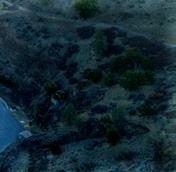
on the lake and the reservoir for recreation,” Mierau says. “There’s a split amongst the watersheds. There’s a huge price tag to pay from somebody. So it’s a complicated thing. It’s as much infrastructure update as it is conservation action. It just has a lot of elements to it. So it takes time.”
“All of our conservation organizations are working together trying to orchestrate a pressure campaign to push it forward as quickly as we can. We’re confident that the path forward is going to eventually lead to dam removal. It’s just a matter of what the path is going to look like and how long is it going to take.”
Meanwhile, salmon and steelhead not only continue to face blocked waters, but also a damaging predatory neighbor that’s being anything but neighborly to them.
Pikeminnows were introduced to the Eel River drainage in the late 1970s, ironically around the Potter Valley Project location and the two dams. It took about a decade for the fish to really start taking a toll on the anadromous fish of the system.
“It took them a while to spread throughout the rest of the basin. They’re still doing that. (Bureau of Land Management) is tracking
pikeminnow incursion into parts of the North Fork Eel River that they’re currently not in,” Mireau says. “They’re making their way above barriers, and once they get enough fish up there and can survive and get a population going, they’ll spread up there. So they’re continuing to spread throughout. They’ve been in the South Fork since I was in grad school in the mid-1990s and we did studies on the pikeminnow around the Garberville area.”
Mireau finds that the pikeminnow strain on salmon and steelhead has multiple levels. Of course, these invasive fish are predators that feed on young salmonids.But there’s more to their destruction of the anadromous residents of the Eel.
“The juvenile pikeminnow competitively displaced the juvenile salmon and steelhead. There’s a lot of habitat utilization by the juveniles that are trying to eat and rear alongside literally swarms of thousands of baby pikeminnow,” Mireau says. “A couple different levels of impact. We’re sort of tearing those apart now, but it’s becoming more apparent as to how damaging they are to salmon and steelhead populations.”
And then there are the dams adding to the stress these precious fish are up against.
“I would say quite a bit,” was Mireau’s take on the stress and destruction that the two dams making up the Potter Valley Project have inflicted on salmon and steelhead.
Fish counts that date back several decades paint a sobering picture about the number of fish the Eel has produced. Mireau points out that despite a modest rebound on the Eel in the early 2000s, when water flows were increased, most of the returns have been dismal for kings and steelhead.
Coho, once abundant in the watershed, aren’t even being counted towards recovery from the Potter Valley Project since the fish aren’t
even making their way to the Van Arsdale Fish Station water diversion tunnel at Cape Horn Dam.
The two dams have all but eliminated the summer steelhead population, though Mierau says the run “still persists genetically in the upper watershed, but it has no anadromy right now. There’s no adult population because the dam blocks access to the habitat they need.”
“The fish that get into the project itself – in between the two dams – and they’re trapped there because they stay in the cold water that’s released from the dams until it’s too late for them to make it out. So it’s what we call an ecological trap,” Mireau says. “In addition, the cold water has been shown to attract fish from other tributaries like Tomki Creek that comes right below Cape Horn Dam. For a while it had a pretty abundant run, and it’s been decimated now. It’s attracted fish but hasn’t produced any out of that. We’re getting literally on the order of a couple hundred fish in a major portion of the basin. It’s just pathetic.”
PG&E, which provides natural gas and electricity for 5.2 million California households, has run the Potter Valley Project, which according to its relicensing website (pottervalleyproject .org) – under the jurisdiction of U.S. Rep. Jared Huffman’s (D) Ad Hoc Committee – “stores winter runoff from the upper Eel River basin and annually diverts an average of 90,000 acre-feet of Eel River water into the Russian River to generate hydroelectric power.”
On April 18, a CalTrout press release announced it was joining four other litigants – Friends of the Eel River, Trout Unlimited, Pacific Coast Federation of Fishermen’s Associations, and the Institute for Fisheries Resources – in a lawsuit challenging PG&E’s managing of the Potter Valley Project.
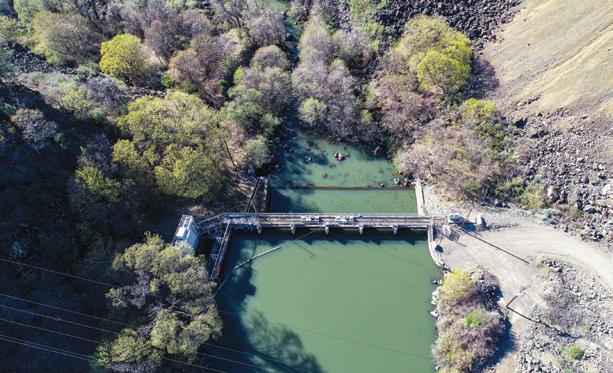
“More specifically, Cape Horn Dam

The thought that the Klamath’s Copco Dams 1 and 2 could start to be removed early next year makes all the hard work of the past a big payoff. “It’s a real marker, not just for our organization but for everyone who has been pushing for barrier removal in the United States,” says Redgie Collins, CalTrout’s legal and policy director. (CALIFORNIA TROUT)
Fish Ladder is inoperable during high flows in the winter months, which is exactly when there’s the most salmon and steelhead moving through that system – they close the gates of that fish ladder, functionally blocking all migration upstream,” Collins says. “And then beyond that, the way the fish ladder operates now, it essentially gives predators at the bottom – both bass and pikeminnow and otters –a buffet line of juvenile and adult salmon moving into the system, as well as steelhead.”
Collins adds that PG&E has moved into a surrender process, which
essentially takes away the company’s licensing processes within the Federal Energy Regulatory Commission, which licenses dams throughout the country. That would take away that protection.
“We submitted a 60-day notice to PG&E stating that very clearly their project operation kills fish. It also harms and harasses salmon through their migratory paths. And in order to fix that problem, we’re asking PG&E to do a couple things,” Collins says. “The first piece is to listen to the federal licensing agency, listen to the National Marine Fisheries
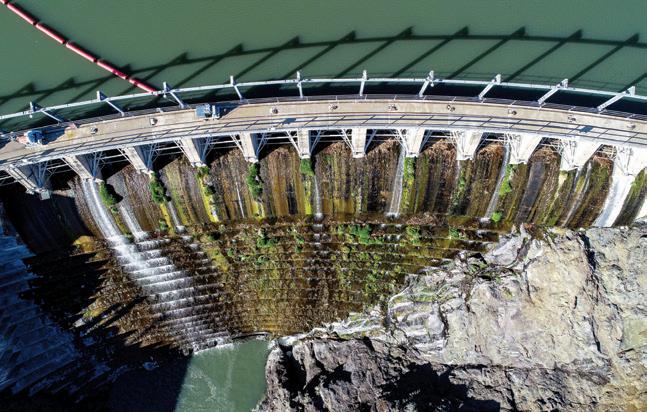
Service and their concerns around the project. They gave eight individual interim protective measures that in their minds would help alleviate the predation and allow for migratory passage for salmon and steelhead. But beyond that, we’re really looking for PG&E to take a leadership role and move the process toward dam removal. We think that that’s the only realistic result for this project.”
Further north, the mighty Klamath’s four dams spanning Northern California into Oregon block another 300 miles of potential salmon and steelhead spawning and rearing habitat, but that may soon change.
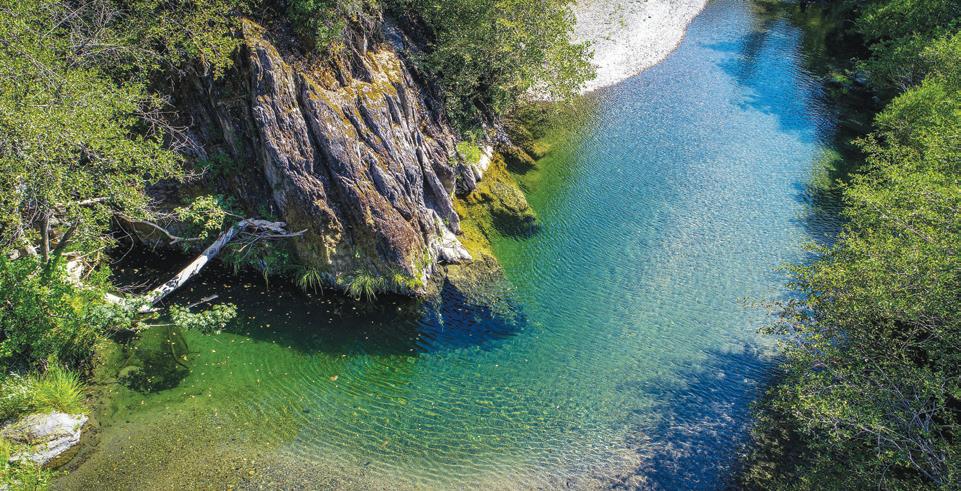
“It’s been really central to CalTrout’s work for the last 20 years. And I know that our executive director (Curtis Knight) started as a regional director up in Mount Shasta and attended the first meeting for what is now and what will be the largest dam removal in the history of the world,” Collins says. “It’s a real marker, not just for our organization but for everyone who has been pushing for barrier
removal in the United States.”
It’s been a long haul, but the checkered flag is in sight. Earlier this year, the Federal Energy Regulatory Commission released its draft Environmental Impact Statement supporting the removal of the four dams. When the final report was made public in late August, the abstract’s language was music to the ears of all those who have fought for the dams coming down.
“Project removal and implementation of mitigation measures proposed in management plans would protect environmental resources, restore project lands, minimize adverse effects, maximize benefits to protected fish, and restore the landscape of the areas that are currently impounded within the project reach to a more natural state,” the report stated. “Commission staff recommends approval of the proposed license surrender, decommissioning and removal of the project with staff additional recommendations and mandatory conditions.”
For Collins and so many others, the FERC’s recommendation was one of
the final chapters in an ongoing story that has seen many lead and supporting characters in the push to restore the Klamath’s free-flowing waters.
Collins cites the rotating board that’s made up the Klamath River Renewal Corporation, plus a “diverse” group of stakeholders involved in the process, with Nature Conservancy, Trout Unlimited, American Whitewater and American Rivers digging in along with CalTrout and others, importantly the Yurok Tribe, Karuk and Klamath Tribes –like the Eel tribal voices – laboring tirelessly to preserve their cultural traditions on these important rivers.
“It started as grassroots organizing and stakeholder groups. It’s really a model for I think what we’re achieving on the Eel. It’s that collaborative approach, joint stakeholders, joint fundraising; they put in the blood, sweat and tears, built the trust that allows each one of the entities that are involved to use their strengths, and coordinate in a way that has created meaningful change,” Collins says.
“It wasn’t always easy because they were literally inventing it. But
they created a path with experts who have been working on this for a long time, both in our organization and out, to really make this a model for dam removal moving forward. We’re now standing on the shoulders of giants to really make these types of projects move quicker. We know we have to make the economic case, make the cultural case, make the ecological case, and really make a project that makes sense for as many stakeholders as possible.”
For the CalTrout duo of Mierau and Collins, the Eel and Klamath projects respectively have become labors of love. Mierau grew up in Southern California, but he and his family make their home near Six Rivers National Forest, the heart of some of the most pristine wilderness and rivers California has to offer.
Mireau calls the Smith the North Coast’s premier river, but he wants the Eel to be the stronghold that the Smith is for its region.
“I think the core reason that we do this is that restoring them to their full potential, where we can have that opportunity, is absolutely essential to life function,” Collins says of the Klamath and Eel. “The ecological importance of having a free-flowing river and restoring those ecological processes is essential to everything that CalTrout does.” (CALIFORNIA TROUT)
“It has that potential. We can get rid of the one hydropower project and the two dams, and make it entirely free-flowing, which is a rare thing across California. It is enormous in size and scale and has the capacity, right alongside the Klamath, for producing abundant fish that can support a commercial fishery and a recreational fishery,” he says. “And it has relatively undeveloped landscapes, so we can at this time turn the tide and make it ecologically resilient and make it be a really healthy watershed going into the future.”
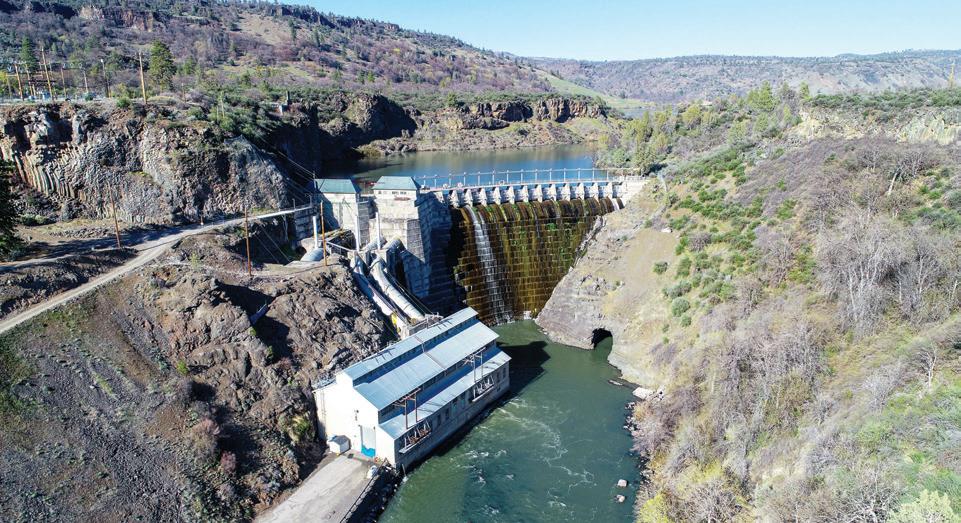
Collins too has moved closer to the action. He now lives around the community of Mount Shasta and is adjacent to the stretch of the Klamath that is soon to be rid of its four dams. The Iron Gate, of course, has taken the biggest toll on migrating fish as the first obstacle heading up the Klamath.
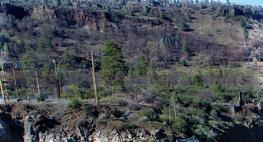
“It’s brutal for a number of reasons. One, they’re taking really cold, clean water and damming it up. And Iron Gate in particular, you see a ton of cyanobacteria. It’s almost impossible
to swim near those dam facilities across those four reservoirs,” he says. “They’re really toxic; you’ve seen a rise of parasites, including C. shasta, that have devastating effects. It’s really terrifying. We talk about the cultural importance and viewing the salmon as actually part of the culture within these tribal nations. It is a genocide when you see these fish kills.”
And for Collins, an avid fly fisherman, improving the quality of life for salmon and steelhead has made it all worthwhile all these years. The expectations are for construction to begin in late 2022 or early 2023, the removal of one of the Copco Dams to happen early next year and the other three taken down by 2024.
“When you work at nonprofits, you find people that are not motivated by money, primarily. We should all be paid as much as highfunctioning for-profit companies, but that’s a different kind of problem to tackle,” he says. “I’ve always known I wanted to work in conservation. I was really lucky to be mentored by
a lot of good close family and friends who really painted a clear picture of what you could do with conservation and the impact you could have, and the livelihood you could create for yourself and your family.”
Mierau was asked about what the Eel could look like 10 years down the road if PG&E’s two Potter Valley Project dams are removed.
“I think first and foremost, the process of decommissioning and removing both Scott and Cape Horn Dams would result in restoration of that river channel itself. And with currently the footprint of Lake Pillsbury, you’ll have many more miles of main channel habitat that can be utilized by Chinook salmon – both adults and juveniles. And then most profoundly, access to the habitat in the headwaters above Lake Pillsbury. That’s going to be a game-changer I think for those populations,” Mireau says.
“But then alongside that, we’re looking at broadening the net of what can be addressed in this process, when a lot of state and federal agencies’ focus will be on the Eel River. I think we should try to utilize this opportunity to pressure PG&E and then expand the effort to begin suppression and eradication of pikeminnow across the basin. And that can have a really big effect.”
Collins had a bit of a spiritual moment recently when he visited Battle Creek, an important tributary of the Sacramento River, and a number of dams and potential removals that would at least improve the situation for endangered salmon that use the creek along their Sac River journey from the sea.
It was a special time for Collins, which he hopes is a harbinger for what could be for the Klamath and Eel, the culmination of years of grinding away to help make these watersheds
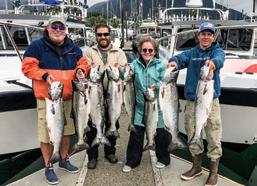
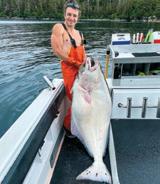
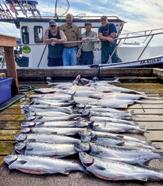

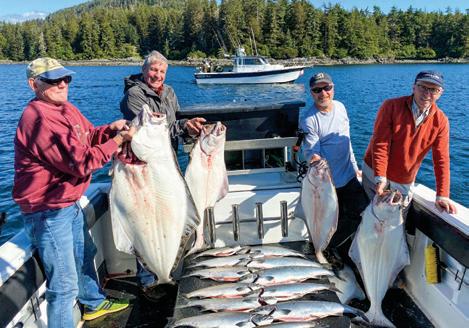
resurgent and whole again.
“It was really the first time I was able to sit in that water just to take a moment and understand that massive salmon will be moving through these systems. There’s no better feeling than to understand that you’re making a direct impact. There’s no place I’d rather be than standing in one of these river systems that either remains a strong portion of what it used to be or it’s (all the way) back; it’s absolutely meaningful,” Collins says.
“The toughest part of negotiating with water users and other entities that don’t have the exact stance that you have, you want to bang your head against the table and say, ‘Why can’t you see this?’” CS
Editor’s note: For more on Eel and Klamath River dam removal projects, check out the following websites: caltrout.org/ campaigns/eel-river-dams and caltrout. org/campaigns/klamath-dams.
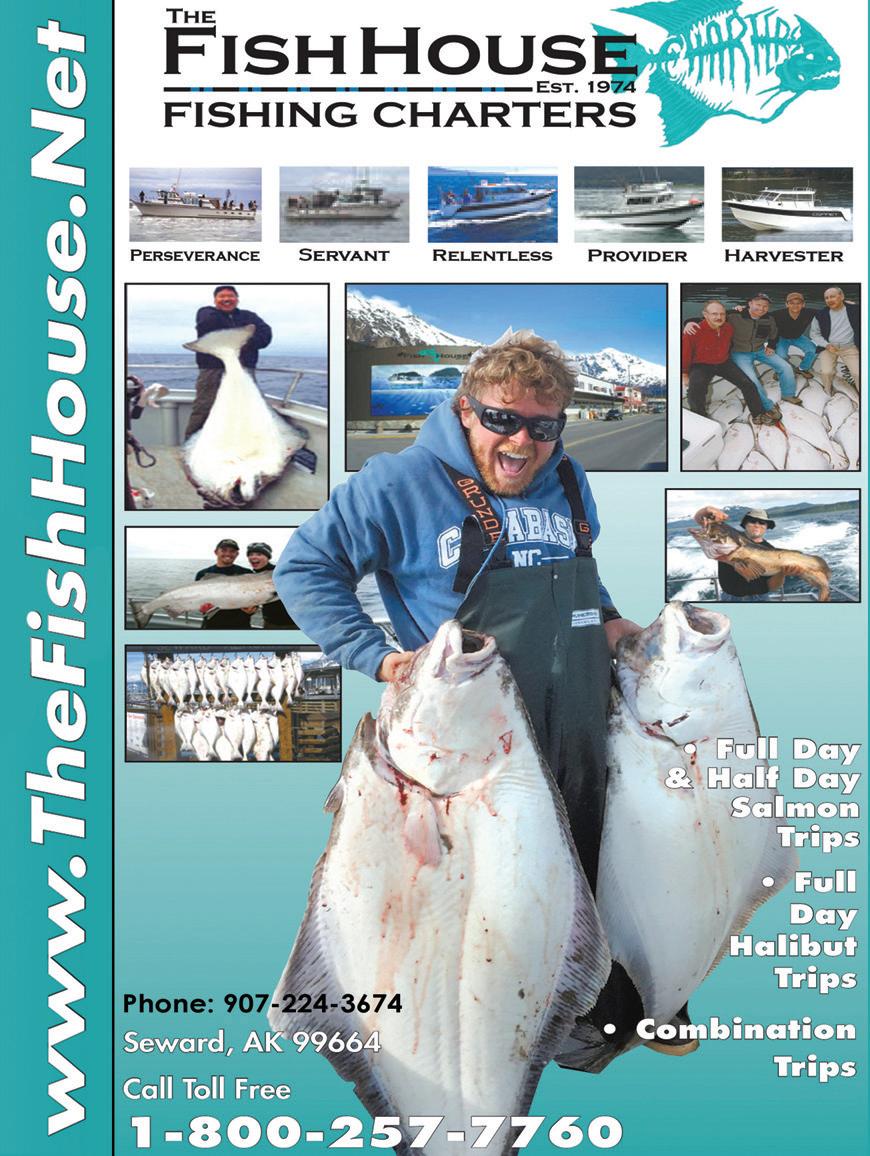

 By Brandon Honig
By Brandon Honig
When scientists proposed moving endangered winterrun Chinook salmon into historical habitat upstream of Shasta Dam this summer, they expected some people would doubt the seemingly new idea could work. But it wasn’t a new idea at all, and it had been proven long ago.
“When talking about returning
salmon to historical habitats above high-head dams, it’s not uncommon to hear claims that it’s too difficult,” said Stacie Fejtek Smith, fisheries biologist for National Oceanic and Atmospheric Administration Fisheries. “And that is fundamentally untrue. The traditional knowledge shows us that fish can be moved and that people have been doing it since time immemorial.”
As an urgent response to a third straight year of drought, NOAA
Fisheries and its partners – the U.S. Fish and Wildlife Service, the California Department of Fish and Wildlife and the Winnemem Wintu Tribe of Northern California – proposed moving winter-run Chinook to the McCloud River, where the fish historically spawned until Shasta Dam cut them off from their habitat in the 1940s. The Winnemem Wintu, who are also known as the Middle Water People of the McCloud
River, have a centuries-long history of transporting salmon past barriers.
“Before dams like this existed, the Winnemem Wintu people would bring these fish with them in baskets above barriers or waterfalls, so they would have that food source,” Smith said. “They have been doing fish introductions for many centuries and are the caregivers to these fish.”
The caregivers would even light fires alongside the river, to mimic stars in an effort to guide fish upstream. Over the centuries, they passed down valuable knowledge about fish introductions, the overall landscape, the mudflows in the McCloud River and the ways salmon benefit the entire ecosystem.
In a sacred riverside ceremony July 11, Winnemem Wintu Chief and Spiritual Leader Caleen Sisk led a group in song, dance and prayer for salmon eggs that had been brought to the McCloud River from USFWS’s Livingston Stone National Fish Hatchery.
“We are asking that the river receive these eggs. We are asking that the old-time ways continue and that they grow in that way,” she said. “We put down that song so they have a fighting chance.”
On July 11 and again Aug. 8, biologists transported about 20,000 winterrun Chinook eggs from Livingston Stone National Fish Hatchery to the Shasta-Trinity National Forest’s Ah-Di-Na Campground. A rotating team of CDFW staff has been at the campground around the clock ever since, monitoring the eggs’ condition
every few hours.
There, on the banks of the McCloud River, the first 20,000 eggs were placed in the tank of a remote site incubator, which held the eggs on a screen in circulating river water. When they hatched, the resulting alevins –newborn salmon – would fall through the screen onto a gravel section of the tank, where they would stay for about a month before swimming through a pipe into the river.


Unfortunately, only four days after the eggs were placed in the incubator, water melting off a Mount Shasta glacier inundated the river with mud, which can suffocate developing eggs. The on-site team continually cleared sediment from the tank and removed any dead eggs to prevent the spread of fungus. But the sediment, particularly in the lower chamber, presented a problem.
“A remote site incubator is a proven tool to incubate eggs, but when we

had such high siltation in the water, it became quite clear it wasn’t the best tool for the job,” said Matt Johnson, senior environmental scientist for CDFW. “We’re rapidly responding on a daily time step to changing conditions in the river. We were aware of Mud Creek’s history and its effect on water clarity in the lower McCloud River, but were unprepared for how much siltation would occur in the remote site incubator and the jeopardy the eggs would be in due to the heavy sediment load.”
The agencies had planned ahead for a possible mudflow event and adapted quickly by setting up a system of incubation trays from CDFW’s Mount Shasta Fish Hatchery to use alongside components of the remote site incubator. Each incubation tray maintains a shallow pool of circulating river water, which can be periodically drained of sediment.
The new system also made eggs

and alevins much easier to see and reach. Staff can now easily identify and remove dead eggs, and they can agitate the water around live eggs with air or a feather to waft sediment off of them. Eggs can also be temporarily removed from a tray to clean it.
Once the alevins develop into fry in the trays, they will be released into a quiet alcove of the river. The fry will then swim downstream about 20 miles toward rotary screw traps set up by CDFW in consultation with the Winnemem Wintu. The large, floating conical traps will collect the fry, which will be loaded into coolers and driven to a release site in the Sacramento River downstream of Shasta Dam. From there, the salmon will continue their journey to the ocean.
“The trapped fish will give us life history information on what these juveniles do in the McCloud River, such as when they will be entering Shasta Lake,” Johnson said. “This will
inform future operation of a more permanent juvenile salmon collection system, which is on a parallel track for implementation with the McCloud River salmon reintroduction project.”

Two Winnemem Wintu children place cups full of winter Chinook salmon eggs into a remote-site incubator where the eggs will mature before the young salmon are released into the McCloud River. (BRANDON HONIG/USFWS)
State, federal and tribal plans call for re-establishing winter-run Chinook populations in historical cold-water habitats upstream of dams. This year’s transfer of salmon to the McCloud River will contribute valuable information toward that long-term effort, but it was not planned for that purpose.
The McCloud River project is one of several actions the agencies quickly collaborated to plan this spring to help stave off the species’ extinction in the face of ongoing drought and rising water temperatures.


“Winter-run Chinook salmon are one of the most endangered salmon species in the nation, and one of the nine endangered species highlighted by NOAA nationwide,” Smith said. “This year we anticipated seeing a very high mortality rate because of the back-to-back drought years, and these actions were pulled together to prevent the species from inching closer to extinction.”
Livingston Stone National Fish Hatchery significantly increased its winter-run Chinook salmon production as part of this effort, which will help maintain genetic diversity through the drought years. The hatchery typically collects 180 adult salmon from the Sacramento

River each year to raise about 250,000 juvenile fish. This year the hatchery and interagency partners increased the collection limit and gathered 463 fish, which raised potential production to as many as 900,000 juveniles.
Federal and state biologists also moved adult winter-run Chinook salmon from the Sacramento River upstream of a dam and into the upper reaches of Battle Creek, where the water is cold enough for their offspring to survive. They also moved adult spring-run Chinook salmon, which is listed as a threatened species, to colder water in Clear Creek.
“This is an all-hands-on-deck situation,” Smith said. “This is an urgent emergency action, and it has relied on strong collaborations and the will of our partners to make it happen.”
Throughout the planning and execution of this project, Winnemem Wintu members shared valuable information gathered over centuries. NOAA Fisheries’ Zayleen Kalalo spoke in depth with tribal members
to document their traditional ecological knowledge and history of fish-moving efforts.

Perhaps most impactful to state and federal scientists, though, was the tribe’s connection with the land and its natural resources.
“As conservationists, we are part of the ecosystem that we are caring for,” said Taylor Lipscomb, hatchery manager for Livingston Stone. “We can become so focused on the scientific aspects of conservation, we can overlook that we are a part of the landscape, as well as stewards of it. By the same token, the resources we are protecting are part of us too.”
Lipscomb is Salish and grew up on the Flathead Reservation in western Montana. There, he and his Native American community participated in ceremonies to honor and celebrate the life-bringing aspects of the Flathead River and its life-giving contents, as well as other parts of the natural environment.
“Taking some time and pausing to recognize the significance of these events, like what happened at Ah-DiNa on July 11, needs to be a part of
the equation,” he said.
Lipscomb’s federal and state peers similarly felt the day’s significance and were impacted by its events.
“Getting a glimpse into Winnemem Wintu culture was very powerful and moving,” Johnson said. “I feel honored that I got to be a part of this ceremony and see how they continue their traditions.”
As part of the July 11 ceremony, the Winnemem Wintu invited the federal and state representatives on hand to receive a tribal blessing and share their thoughts. Several scientists spoke emotionally about returning an endangered species to habitat it hadn’t swum in decades.

“This is what people get into conservation work for,” Lipscomb said. “To see something like this come to fruition – to put heads together, work hard and work through barriers to bring about conservation change –is super-rewarding.”
CS
Editor’s note: Brandon Honig is a public affairs specialist with the U.S. Fish and Wildlife Service. For more on the Pacific Southwest Region, check out fws.gov/cno.

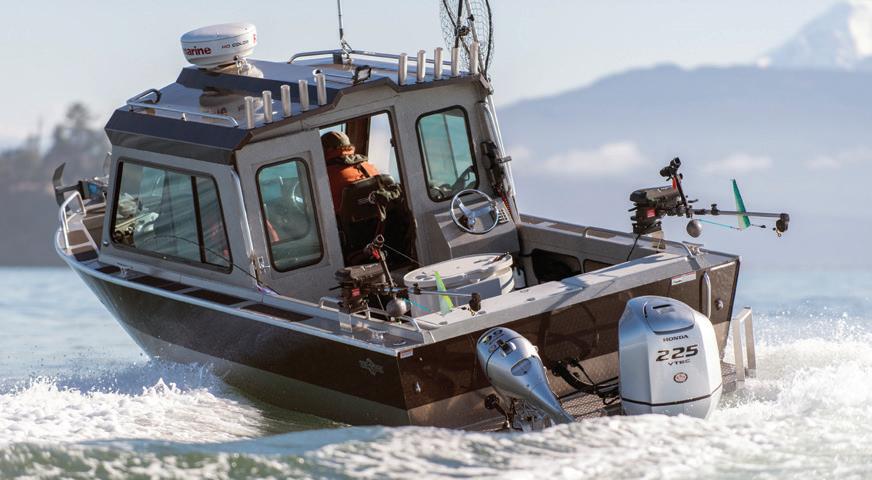
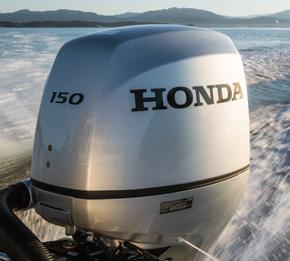
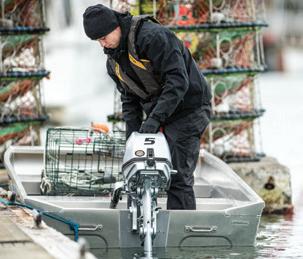
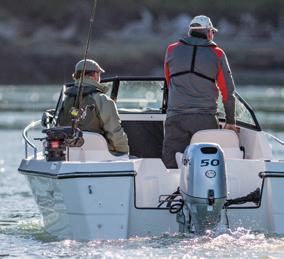

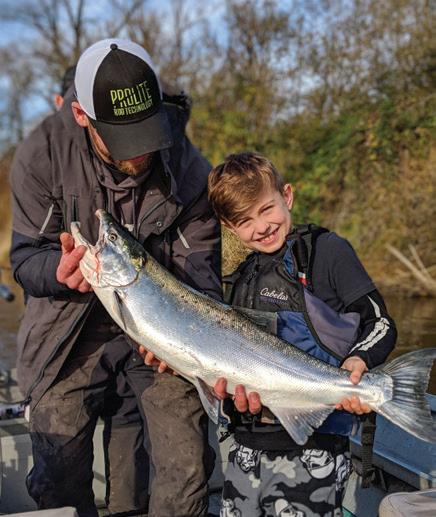


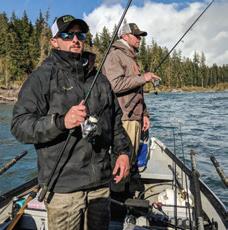
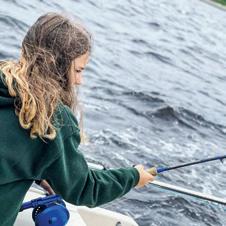
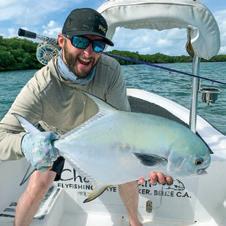
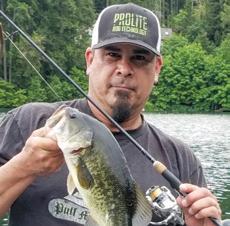


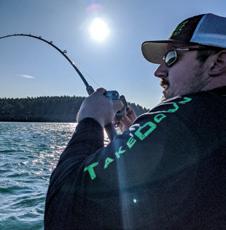
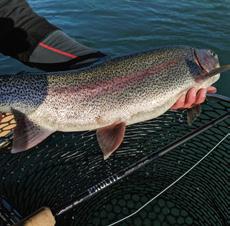
 By Cal Kellogg
By Cal Kellogg
The Lassen County cold was bone-chilling – 22 degrees when I launched the kayak. Now, three hours later it was still below freezing. I knew because the forward hatch of my Hobie was dotted with splotches of ice, formed almost instantly from water flung off the landing net.
The adrenaline of landing trout after trout to about 4 pounds made me immune to the cold. I was pulling a small orange trolling fly 12 feet deep on a hybrid leadcore rig at 2 mph.
The trout were holding 15 to 18 feet down close to shore. As I peddled out of deep water directly at the shoreline, I turned hard to port when I saw the bottom coming up and eased into the zone. Pedal, pedal,
pedal; it wouldn’t be long. The first arch appeared on the sonar screen, then two more and another.
The tip on the yellow leadcore rod dipped violently and instantly snapped back straight. Swing and a miss. A nanosecond later the trout was back and this time the hook sunk home. The rod drew down into a hard arch and vibrated with the trout’s staccato headshakes.

I had a hard time wrenching the rod out of the holder, but I got it free and started working the reel as I pedaled for open water.
After the initial violence the trout calmed down and started swimming toward the kayak. It was like leading a big dog on a leash. I didn’t think the compliance would last long. The linecounter reel counted down, 21 feet, 20, 19, 18 …
Boom! The fish went nuts as if a switch had been thrown. It dogged down and away for a beat and then went airborne. When it splashed down,
I dipped the rod tip and cranked. My goal was to get the fish down below the surface and prevent more wild jumps and the tactic worked.
The big ’bow crash-dived spinning line off the reel and then made several short runs punctuated with hard rod-surging head shakes. I could feel the fish weakening, but it was determined to stay deep and bulldog.
I stayed on the pedals to maintain forward momentum and worked the reel, smoothly gaining line whenever the trout allowed. When the fish materialized, it was spent. I laid it out, lifted the head and scooped it into the net.



The rainbow weighed 5.6 pounds and measured 25 inches long. It would yield two blood-red filets and some world-class meals!
THAT’S WHAT FISHING EAGLE Lake in the fall is all about: big numbers of
heavy, hard-charging rainbows that are renown for both their fighting ability and the outstanding table fare they provide.
For the uninitiated, Eagle Lake is located in Lassen County, roughly 16 miles from Susanville. The lake is unique; it sits in a closed basin and has one major tributary, Pine Creek, and no natural outlet. Water level has been a factor at the lake in recent years, having dropped from an alltime high of 29,000 surface acres to about 26,000 surface acres presently.
Situated at 5,100 feet, Eagle straddles the northern Sierra, southern Cascades and the Great Basin. The west side of the lake is dominated by evergreen trees common to the Cascades and Sierra, while the east side features the sage-covered hills and rock formations of the Great Basin.
In this remote section of California, wildlife prospers and visitors regularly


come across mule deer and coyotes, along with a long list of bird species, including golden eagles, bald eagles, ospreys and other birds of prey, ducks, geese, loons, grebes and grackles, plus huge white American pelicans.
Eagle Lake’s water features a high level of alkalinity and its rainbows are uniquely adapted to tolerate it. The trout grow quickly and by 3 years of age, they average 18 inches, and fish to 11 years old have been documented. A generation ago the lake produced rainbows in excess of 10 pounds, but these days a 6-pounder is a monster and anything beyond 4 is an achievement.
The rainbows have access to a broad spectrum of plentiful prey. Tui chubs are a favorite, but there are other minnow species in the mix too,
along with various aquatic insects, shrimp and snails.
TROUT FISHING KICKS OFF at Eagle on Memorial Day Weekend and extends through the last day of February. The limit is two trout per day and four in possession.
The trout are ready strikers and for the most part good fishing can be had throughout the spring and summer, but things really start to get exciting when September gives way to October.
October, November and at times the first week or two of December provide phenomenal action. At this time of the year, the largest trout in the lake emerge from their summer haunts and cruise shallow nearshore waters, feeding heavily in preparation

for the lean winter months.
In the fall, trollers, bait anglers, shore anglers and fly guys all enjoy epic action on fish that average 2-plus pounds and range up to and beyond the 5-pound threshold.
There was a time when I fished Eagle during the spring, but these days I make one or two pilgrimages to the lake in the fall. My preferred approach is trolling from a pedal kayak. At times the kayak gives me an edge over boaters, but I mainly favor the kayak for its quiet simplicity.
My No. 1 offering is a trolling fly, usually presented in the top 15 feet with a hybrid leadcore rig. I’ve also had great luck on 2- to -3-inch grubs and various spoons. As I said, the rainbows are biters, so generally once you locate the trout, lure selection



isn’t crucial. Natural-colored lures often work well, but I wouldn’t think of visiting the lake without plenty of orange in my tackle kit.
Bait anglers fishing from either boat or bank score well with nightcrawlers, typically drifted naturally under slip bobbers set anywhere from 3 to 12 feet deep. For fishing off the bottom, some anglers run with inflated ’crawlers, while others toss PowerBait with success.

Fly anglers also fish out of boats and off the bank. The most hardcore often use a boat to access a remote stretch of shoreline, beach their boat and then wade the shallows. All manner of tui-chub-imitating streamers work when stripped slowly, both along the bottom and in the middle of the water column.
On days when the trout turn their noses up at streamers, nymph and shrimp imitations methodically drifted under strike indicators get the
nod, but it’s the rare fall day when you can’t find an Eagle Lake rainbow willing to blitz a streamer.
WHILE THE AREA SURROUNDING Eagle features several campgrounds, most of them close in October. There are lots of nearby national forest lands where you can camp, and both a private campground and rental cabins are available.
Worst-case scenario, you can post up in a hotel in Susanville and make the drive to the lake each day. I’ve spent my share of subfreezing nights in tents, so I generally opt to stay in town, where I can enjoy hot food, hot showers and a warm bed!

When you fish Eagle Lake in the fall you must be prepared for cold conditions, plus snow can move in at times. Morning temperatures in the teens are common and it can stay at or below freezing for much of the day.
Good gear will ensure your
comfort, but it’s important to be vigilant on the launch ramp and in parking lots, since slippery ice can form anywhere. You’ve also got to focus on safety out on the water, especially if you are fishing from a kayak or small boat. When the air temp is in the 20s and the water is in the 40s, your shelf life won’t amount to much if you go for a dip.
But if you love trout fishing and are the type of angler who wants an apex fishing experience, put Eagle on your fall fishing calendar this year and thank me later for this cathedral for trout anglers. If you visit in November and see a guy on the troll in a big Hobie Pro Angler, it might just be me! CS
Editor’s note: Cal Kellogg is a longtime Northern California outdoors writer. Subscribe to his YouTube channel Fish Hunt Shoot Productions at youtube.com/user/ KelloggOutdoors.


As I wrote this, the remnants of Tropical Storm Kay passed through Southern California, dropping some much-needed rain.
With that precipitation, maybe the region’s lakes will take in some more water and rise a bit.
The weather has still been very warm with this burst of rain, with temperatures remaining over 80 degrees. That should keep the lakes’ water temps up in the 70- to 80-degree range.
And as water heats up each day, so will the morning topwater bite at most lakes around the Southland.
Bass are schooling up into wolf packs, roaming the shallows and eating everything in their path.
Schools of bass fry and shad and bluegill fingerlings will be swallowed up by these hungry fish. A trip down the bank in the gray light of morning could produce some fun action and larger bass. In the shadows and low

light, expect larger bass to venture into the shallows to feed.
There are so many lures for fishing the shallows and every angler has a favorite offering, but sometimes it takes a noisy bait and sometimes a more subtle presentation. Examples are as simple as a classic Pop-R or a Zara Spook, giving you a popping
versus gliding action.
At times you can go with a lot of commotion and use a buzzbait, which calls the bass out of their lair. The type of shoreline will also dictate what bait to throw, but you can be as aggressive as you want in any situation, even if you do have to go in and retrieve your bait by bouncing it off a tree branch.
I personally love throwing a
Author Bill Schaefer caught this nice largie on a buzzbait. “A trip down the bank in the gray light of morning could produce some fun action and larger bass,” he writes. “In the shadows and low light, expect larger bass to venture into the shallows to feed.” (BILL SCHAEFER)

buzzbait, especially if there are stickups and/or young tule growth scattered in the water. Bouncing off those stickups seems to excite bass and call them up to the bait, producing an exciting topwater explosion and bite.
A lot of the time, the best situation can be a little wind ripple on the surface in the morning. It breaks up the fish’s view of what’s above the water and they are not as wary. If there is structure in the water, you want to bounce off of it or pass as close to it as possible.
As the sun rises, the topwater bite always seems to drop off, but you just need to fish the right shoreline as long as you can. You still need to think about the structure along the shore. Is it casting shade or is it thick cover for the bass? The fish may just be hunkered down in some thick shoreline grass that you can call them out of with a buzzbait or popping bait.
Think about presentation as you work down the shore. Remember, passing your lure as close to the structure should cause the strike as you enter the bass’s zone.
Another bait that works well this time of year is the frog. Whether it is a popping frog or a regular-bodied frog, it’s all what you have confidence in. Weeds grow all year and litter the surface with dead growth and the bass lay up under it, waiting for something to fall in and scurry across it. That’s when you throw the frog and that’s when you get that big bass to explode up through the dead weeds and take your bait. There’s nothing like it!
This time of year fish will also chase the shad offshore as well. I know it can be somewhat crazy chasing them around the surface, since they always seem to pop up where you just left.
I like to use a ¼-ounce darter jighead with a small curltail piece of worm on it. I cast beyond the breaking fish and race it back though them. They don’t
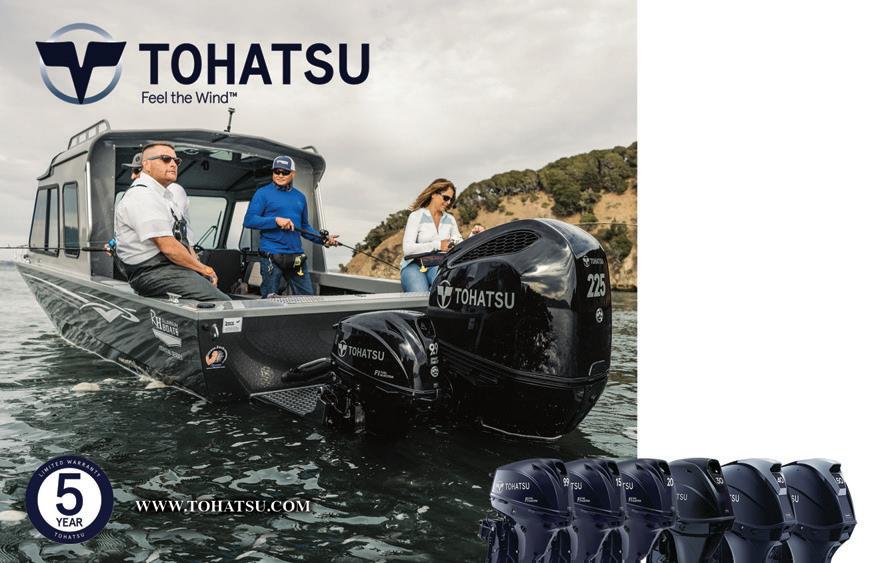

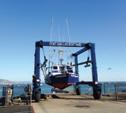
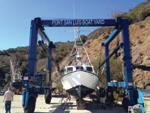


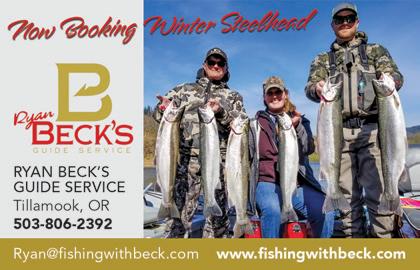

have time to decide on it and they just eat it. Also, a small jerkbait about an inch long or a small 1-inch topwater bait – preferably a popper of some type – will also do well. I feel the spray of water off the front of the lure confuses bass enough to create bites.
Tackle is important too, as you want to be able to pull the bass out of that cover. I use a 7-foot Daiwa Tatula casting rod and reel loaded with either Daiwa or Maxima 50- or 60-pound braided line. If I feel the need for a leader, Maxima fluorocarbon line is the way to go.
You can also go to spinning gear if that is your preference. If so, perhaps drop to 25-pound braid. A Tatula 7to 8-foot spinning rod with 25-pound braid and a short fluorocarbon leader could do the trick. That allows you to throw light topwater lures a little easier. Now get out on the water and get them! CS



